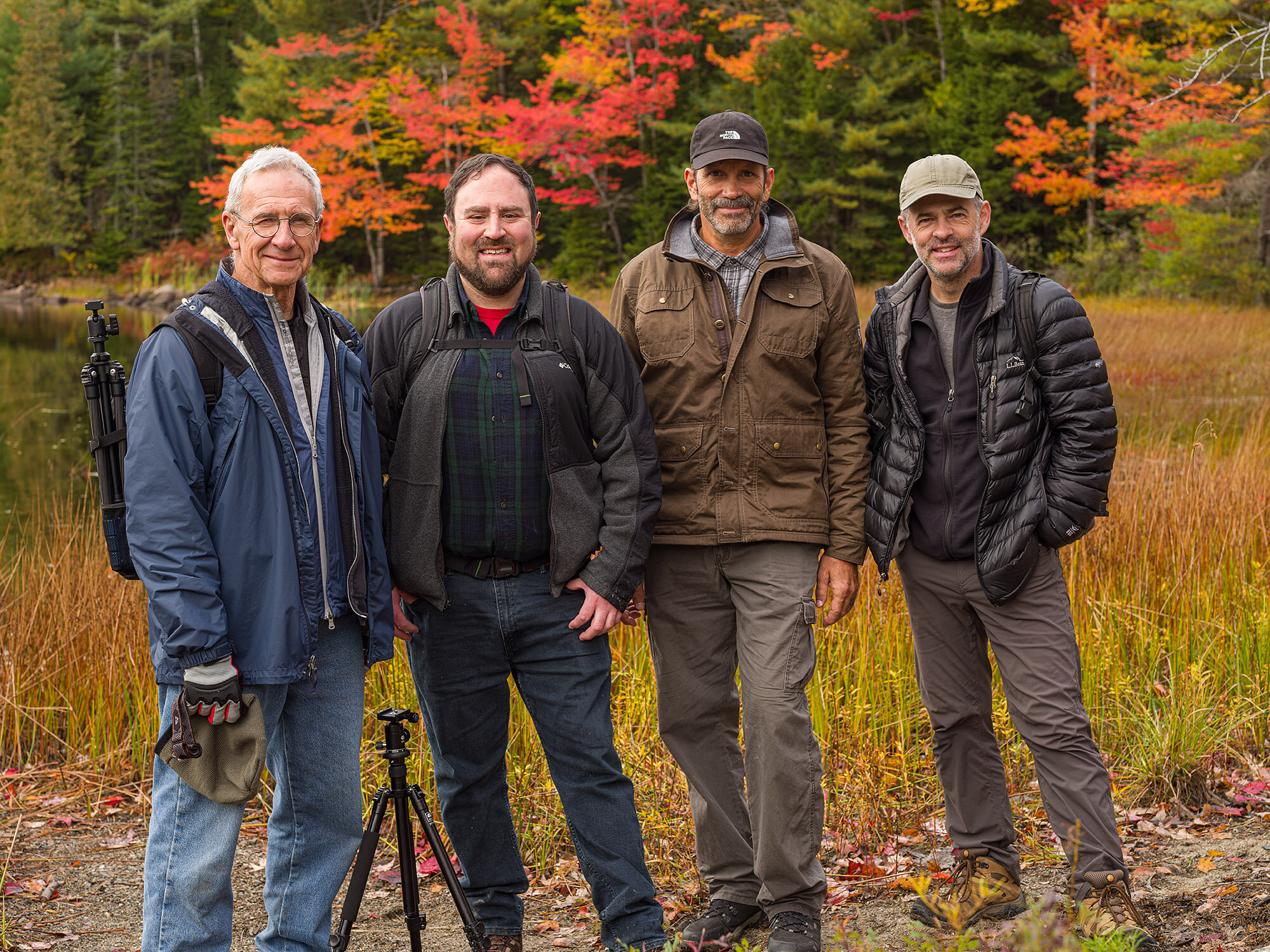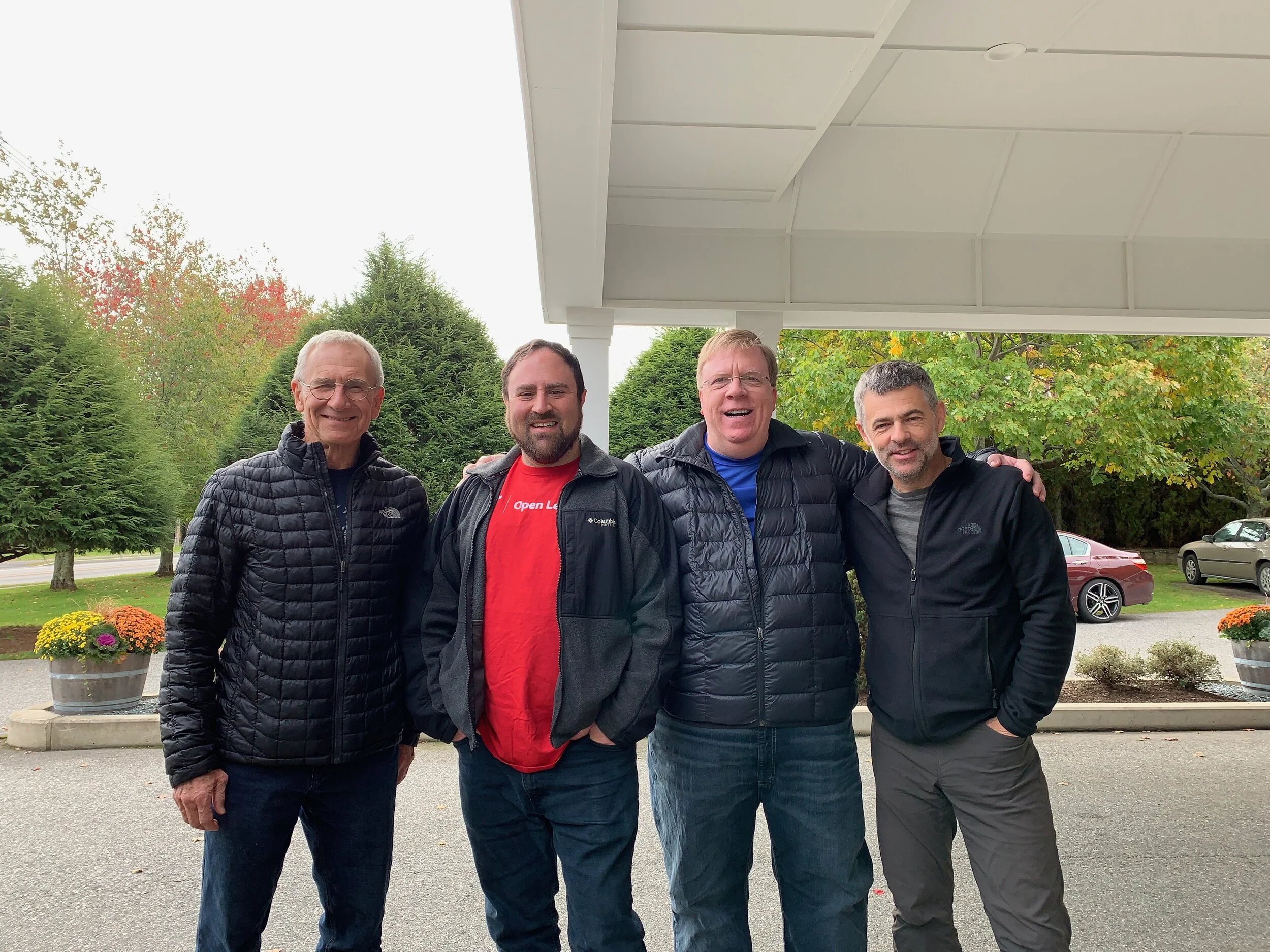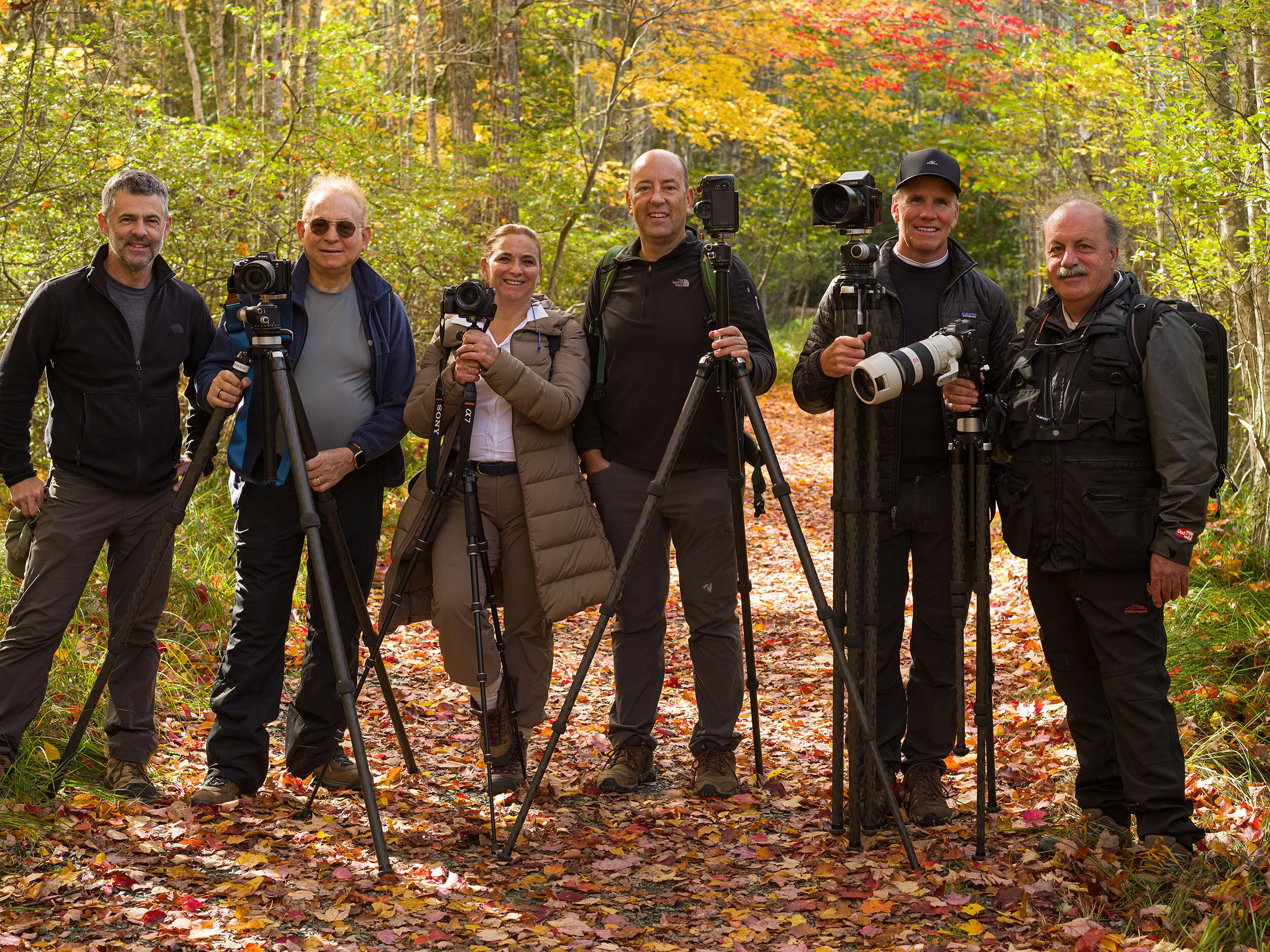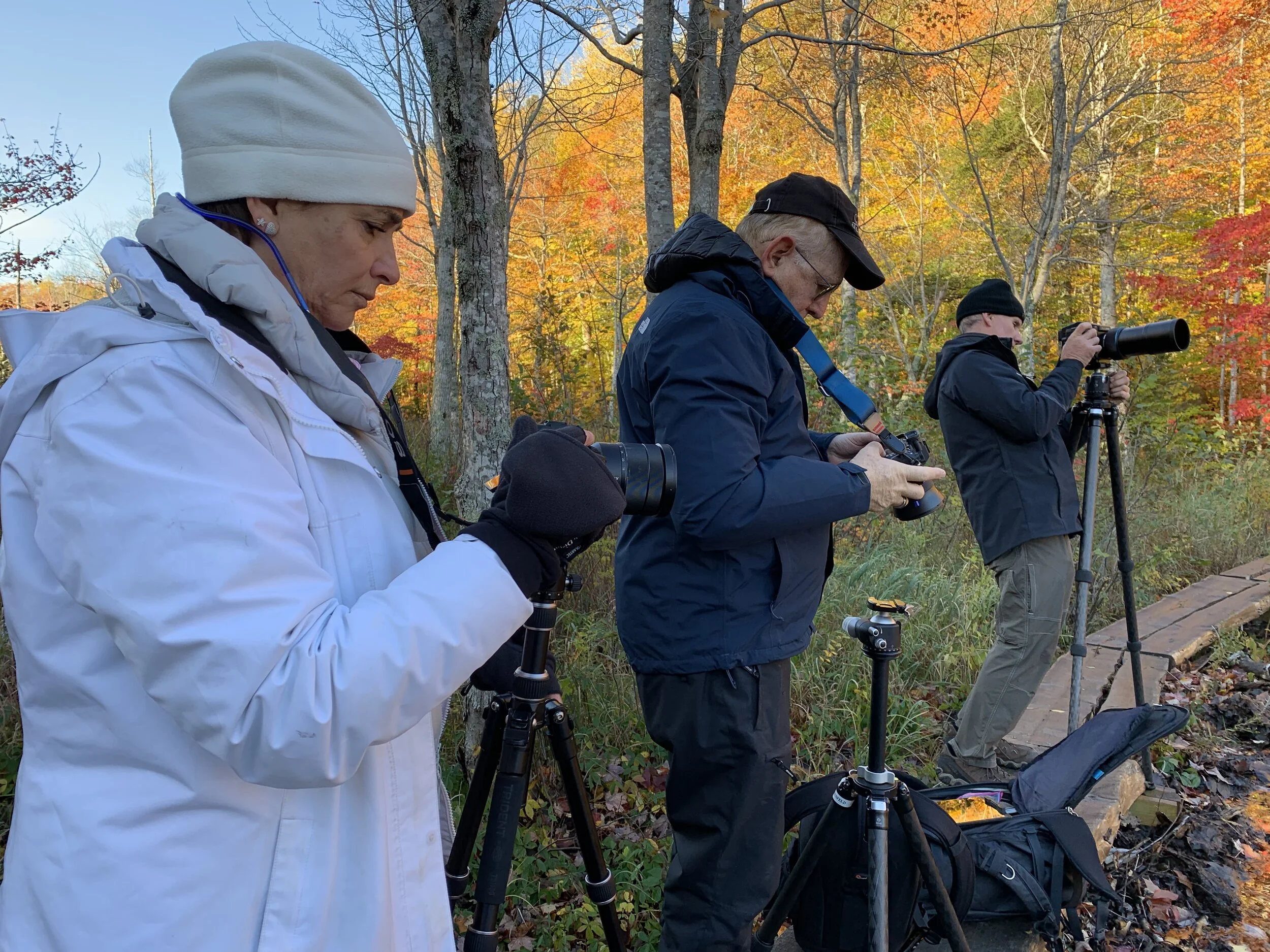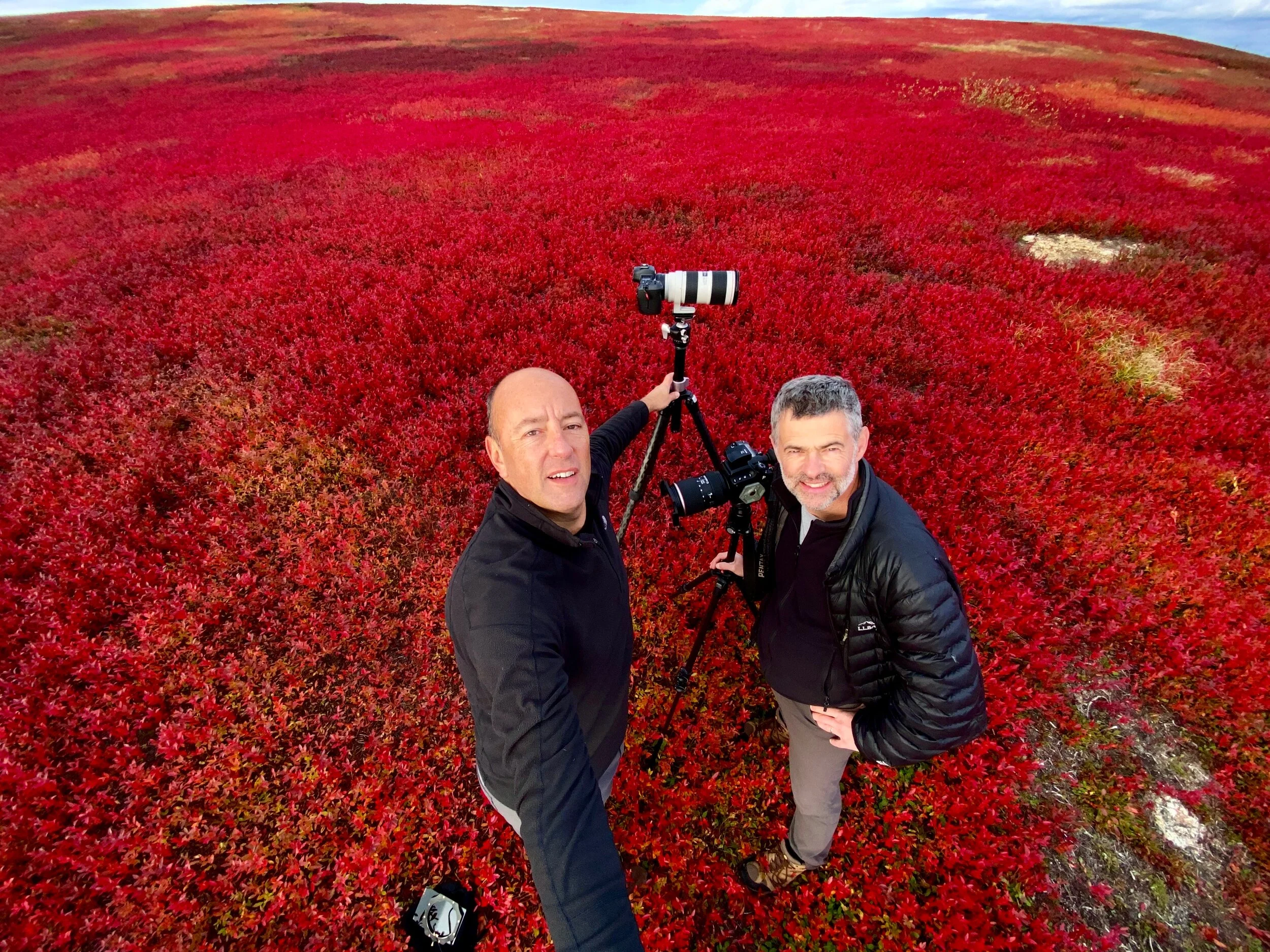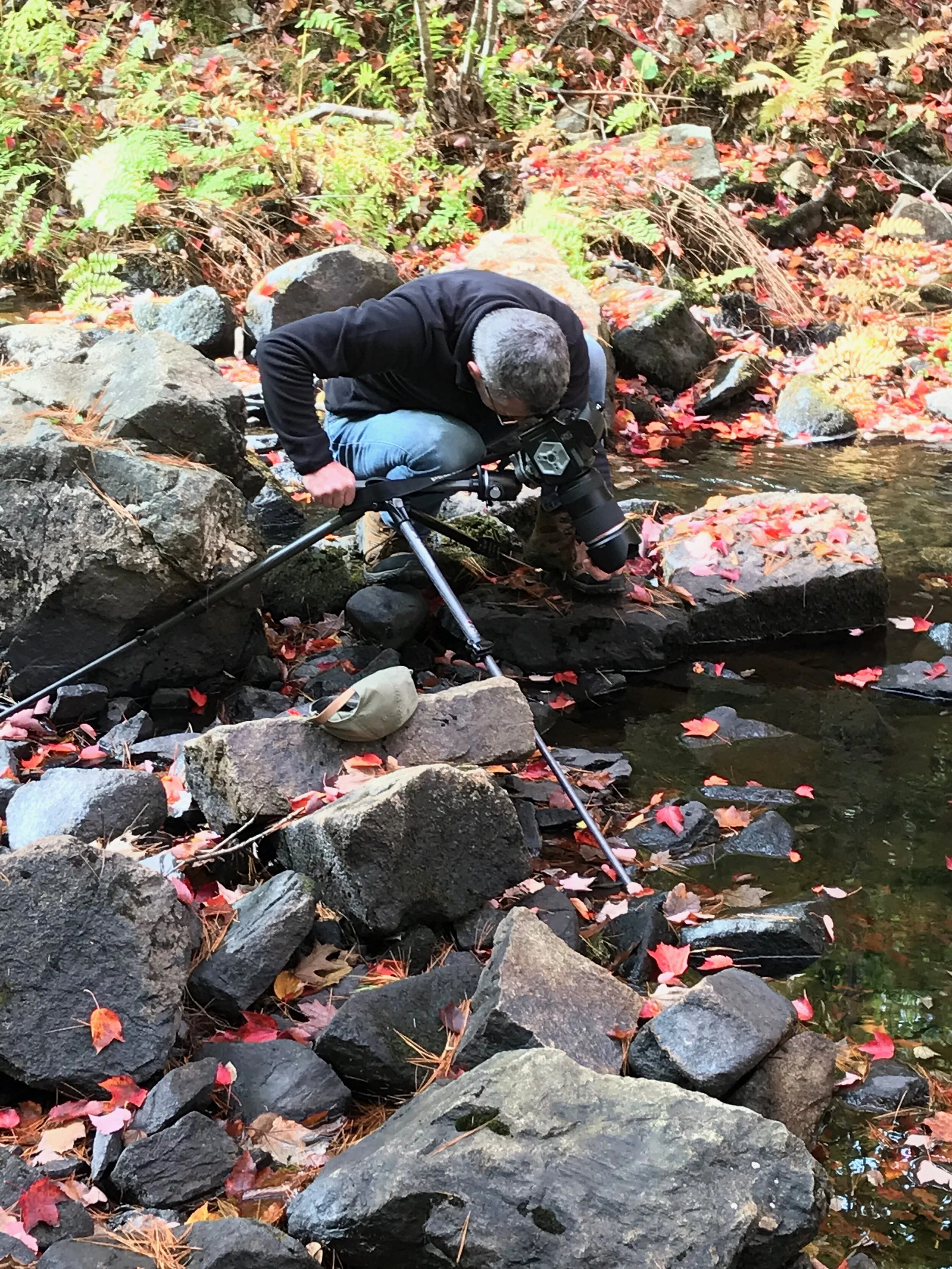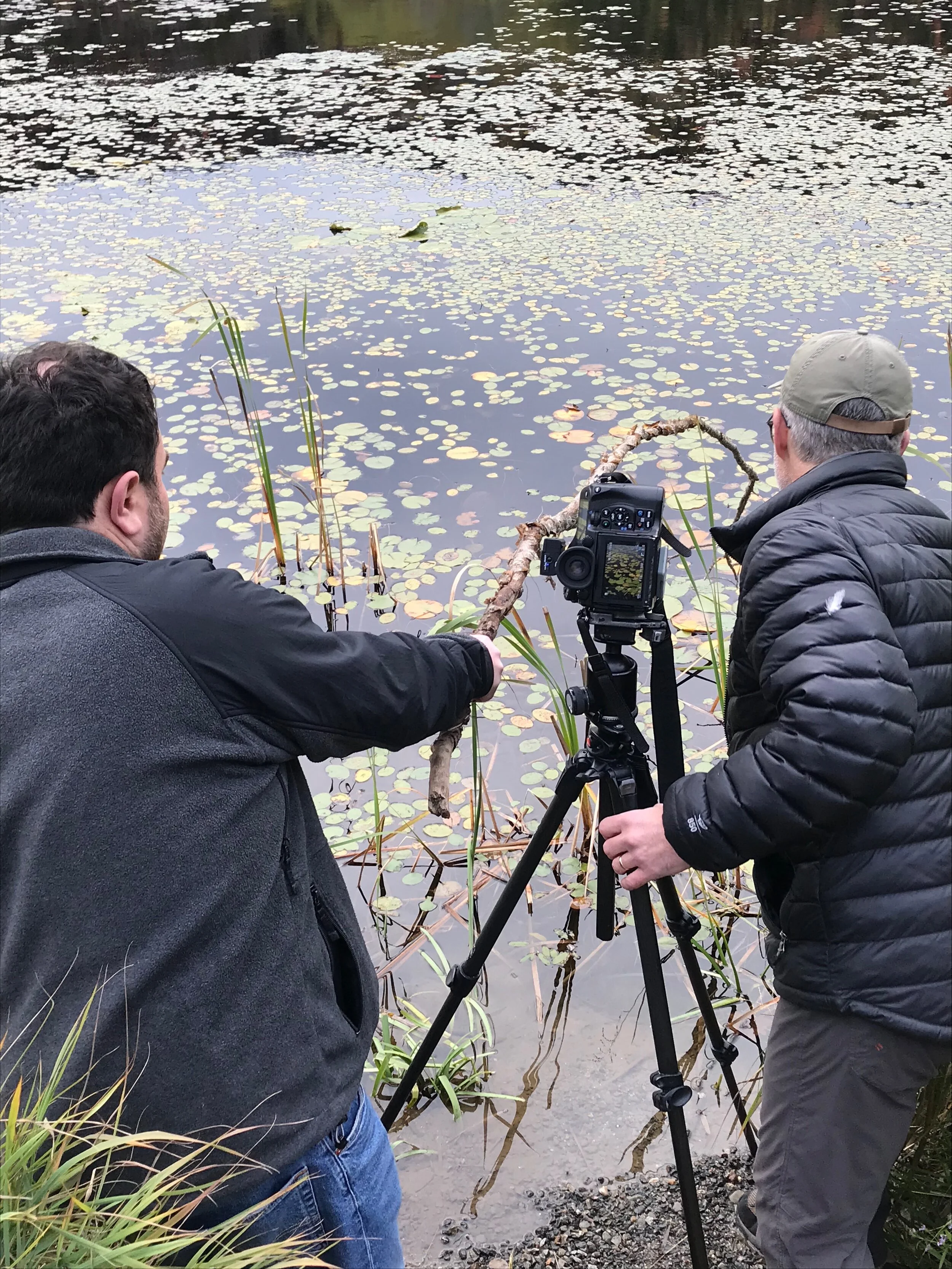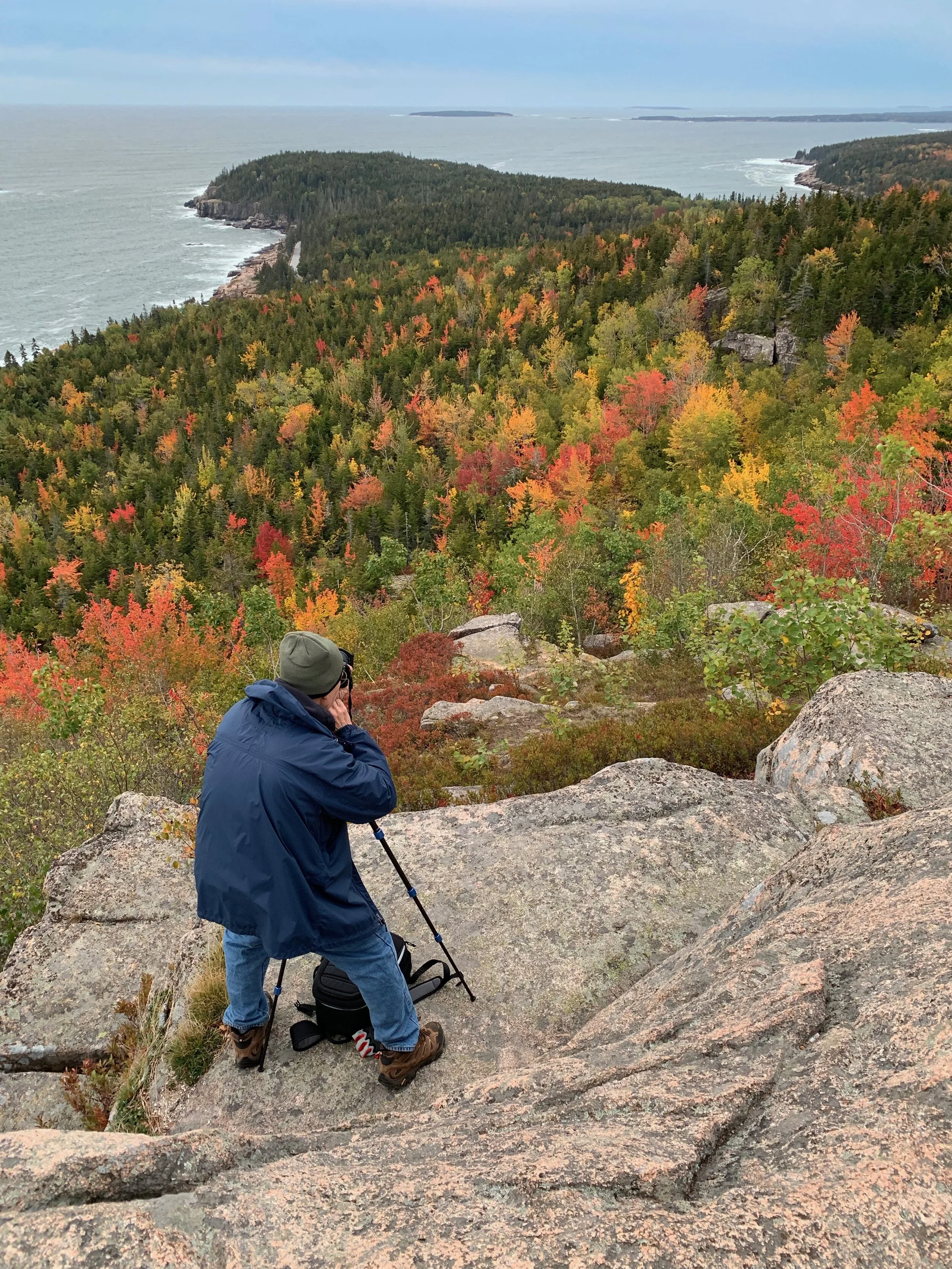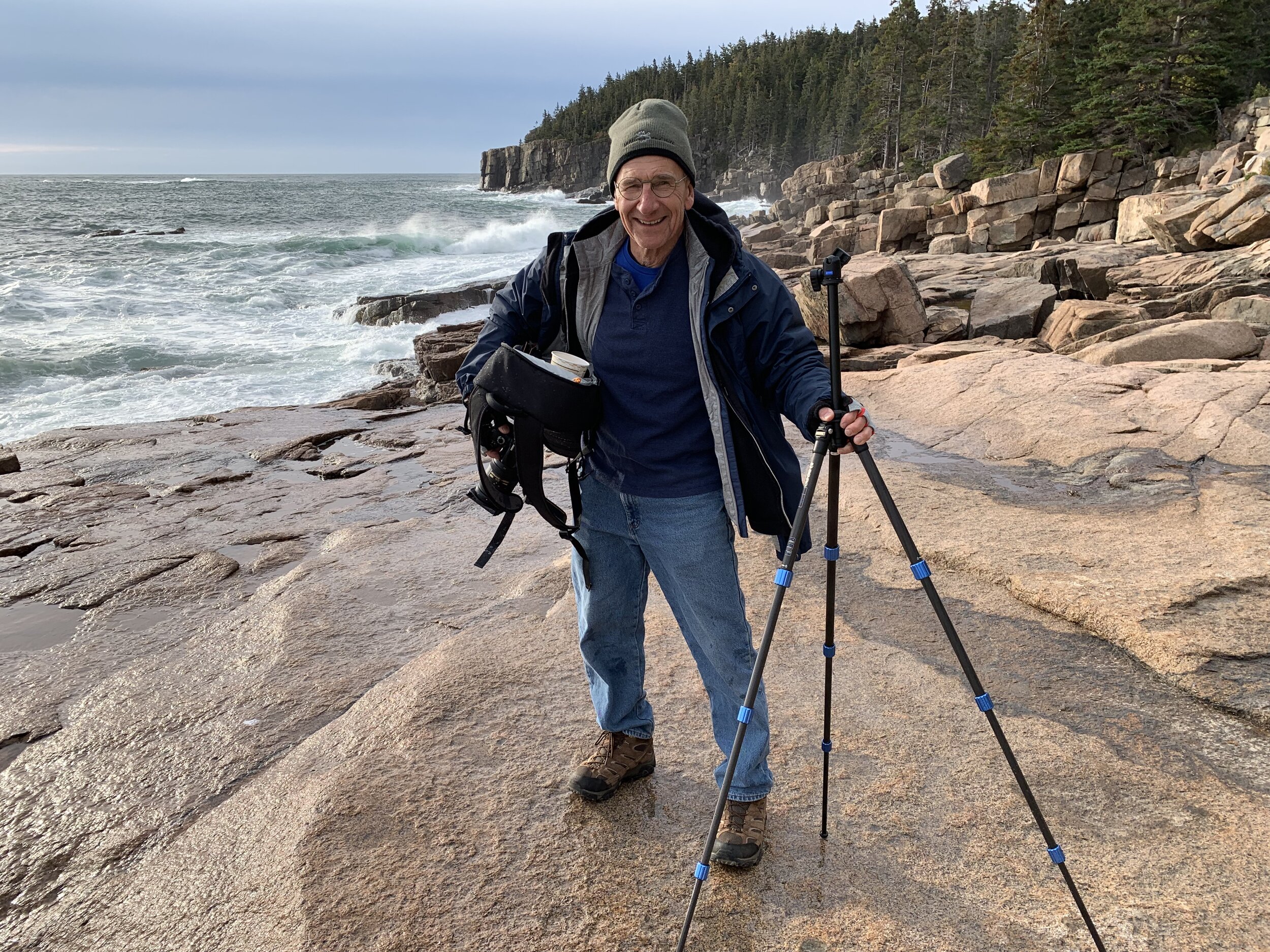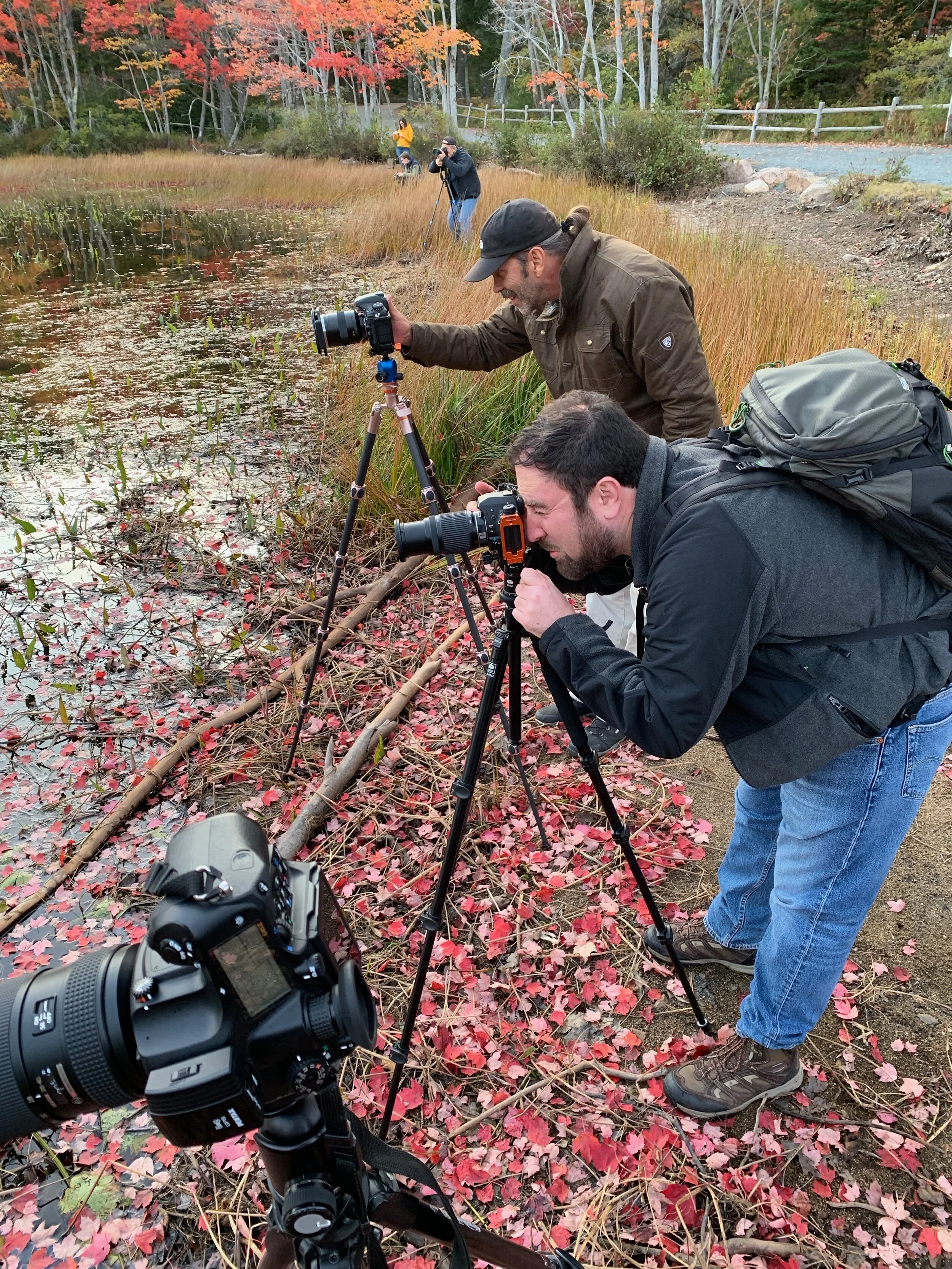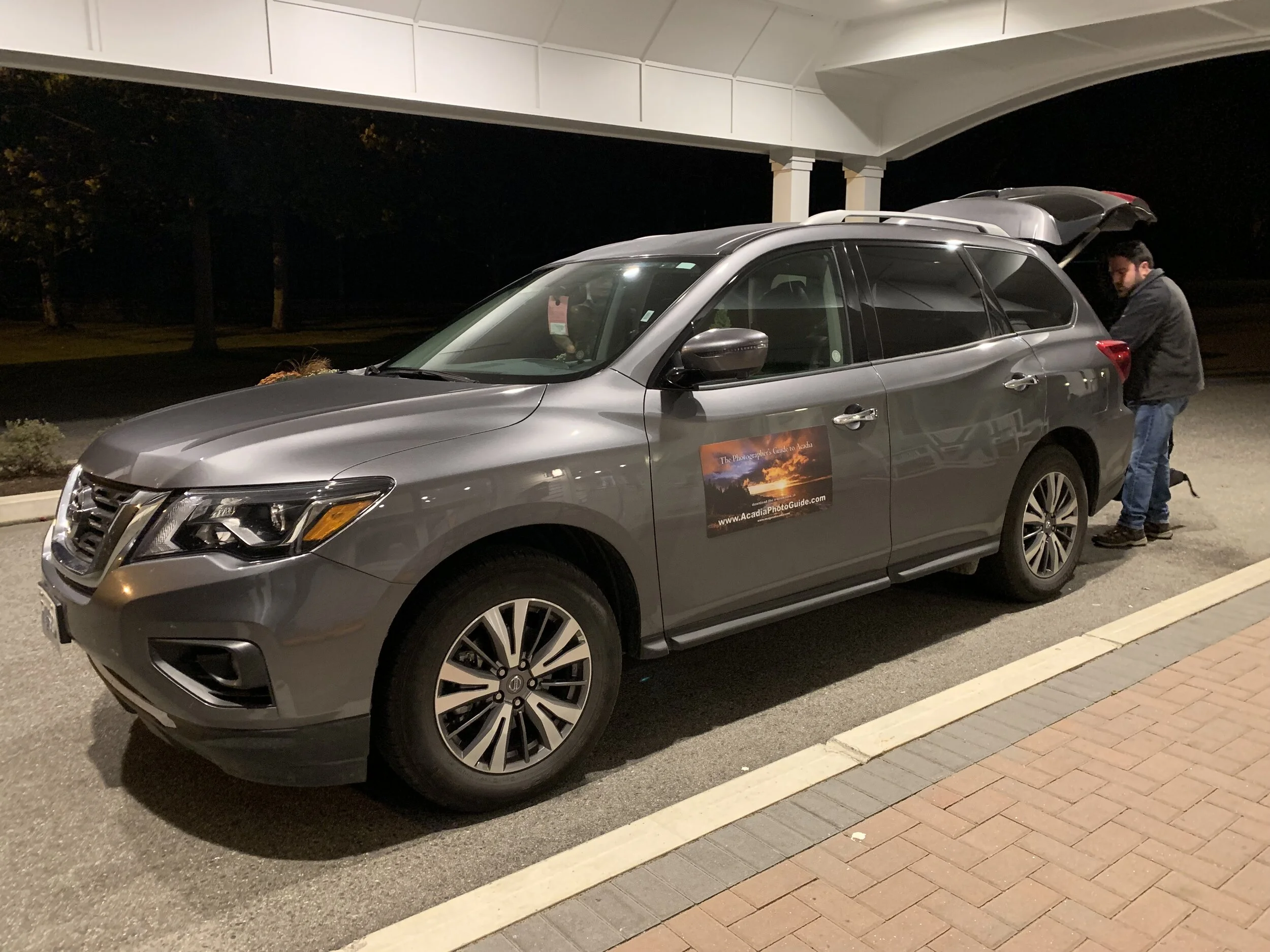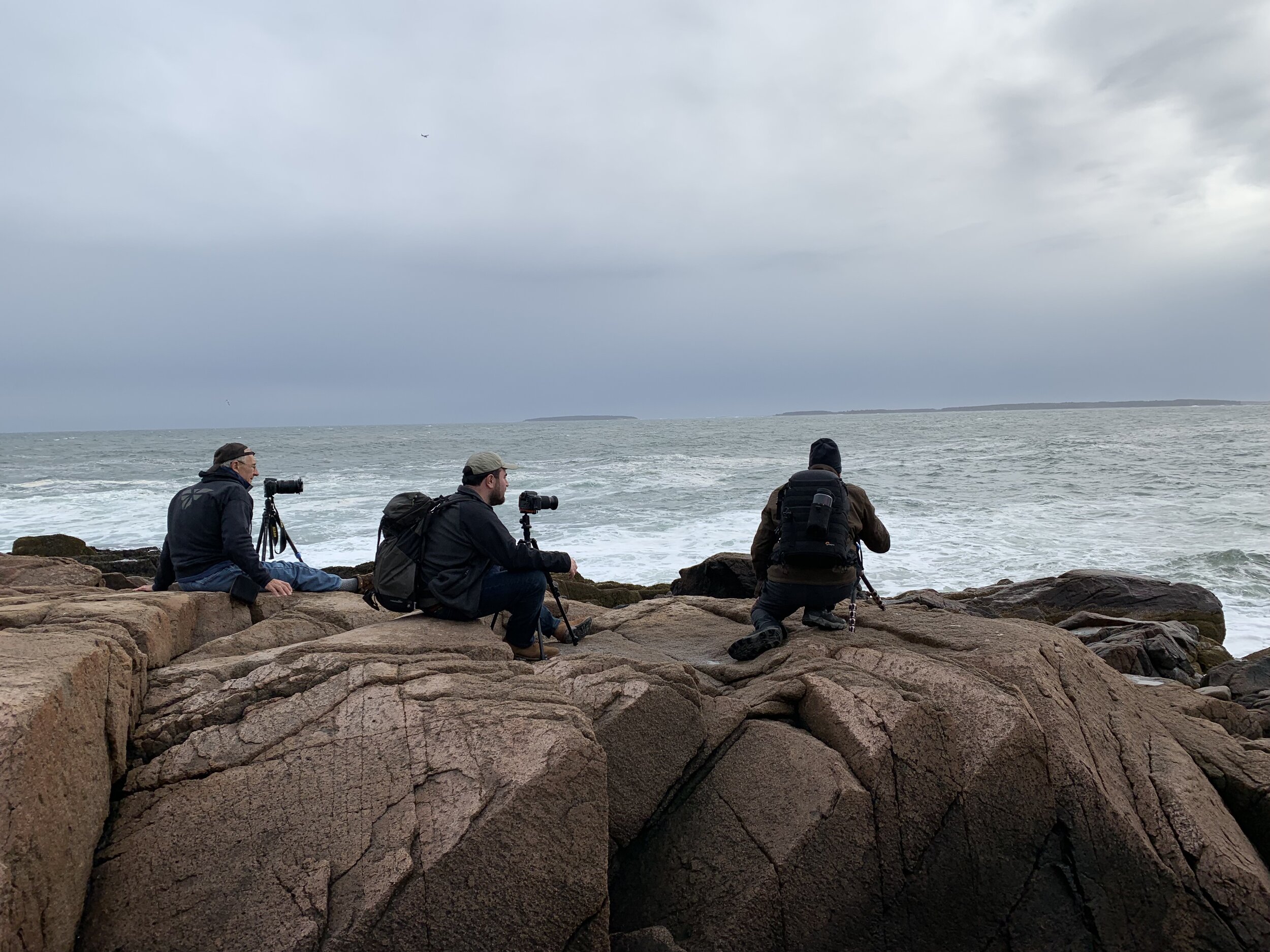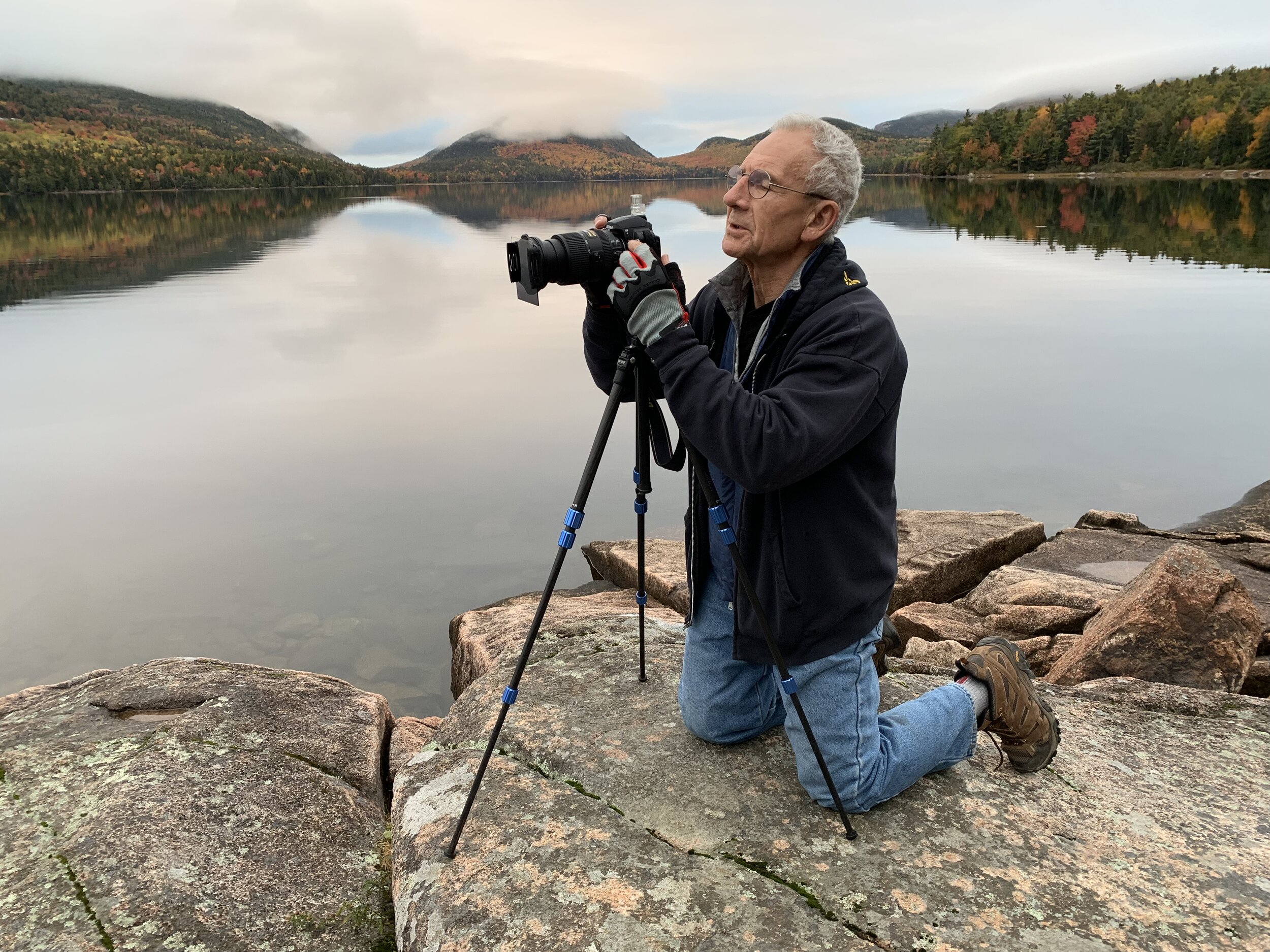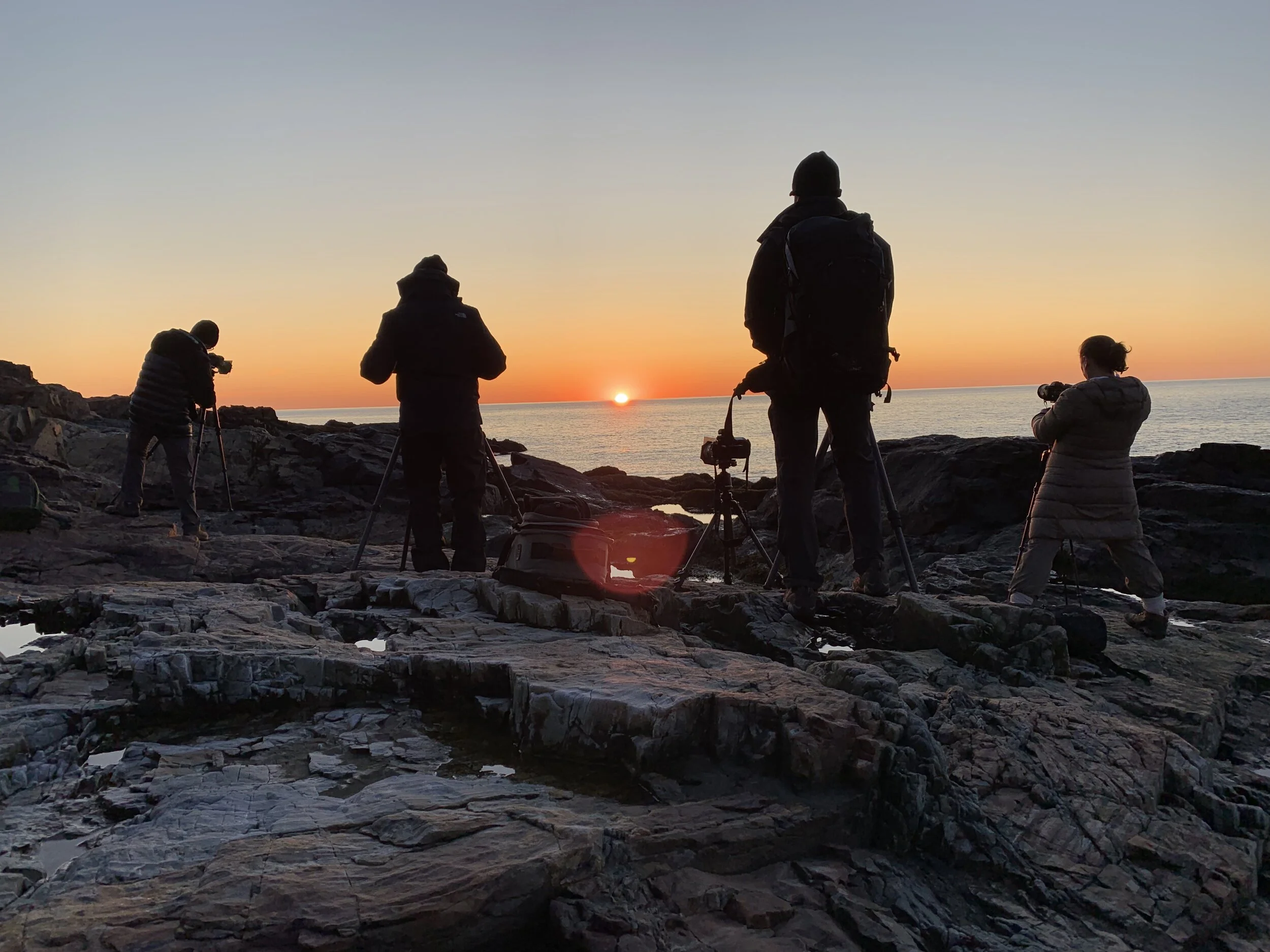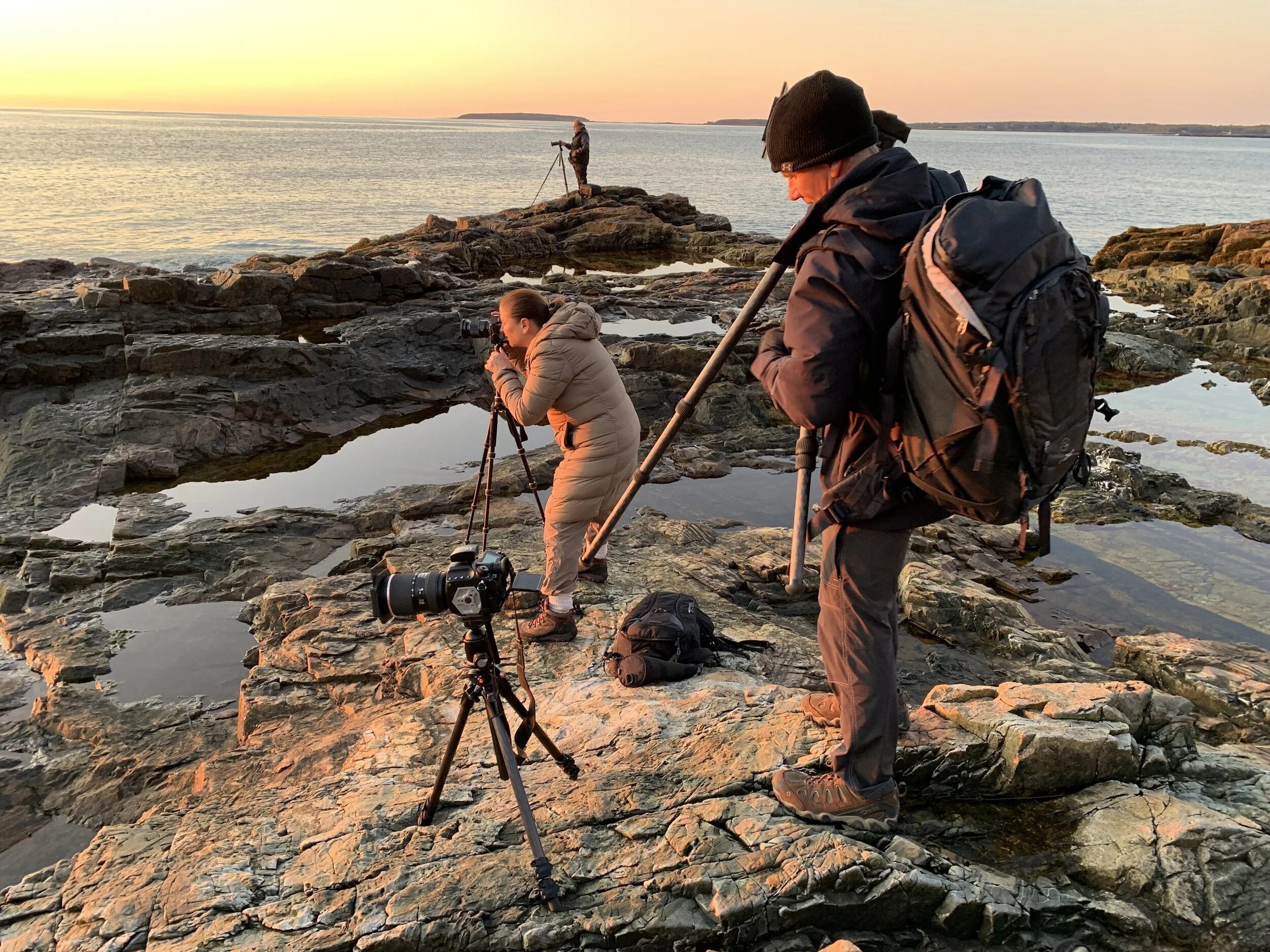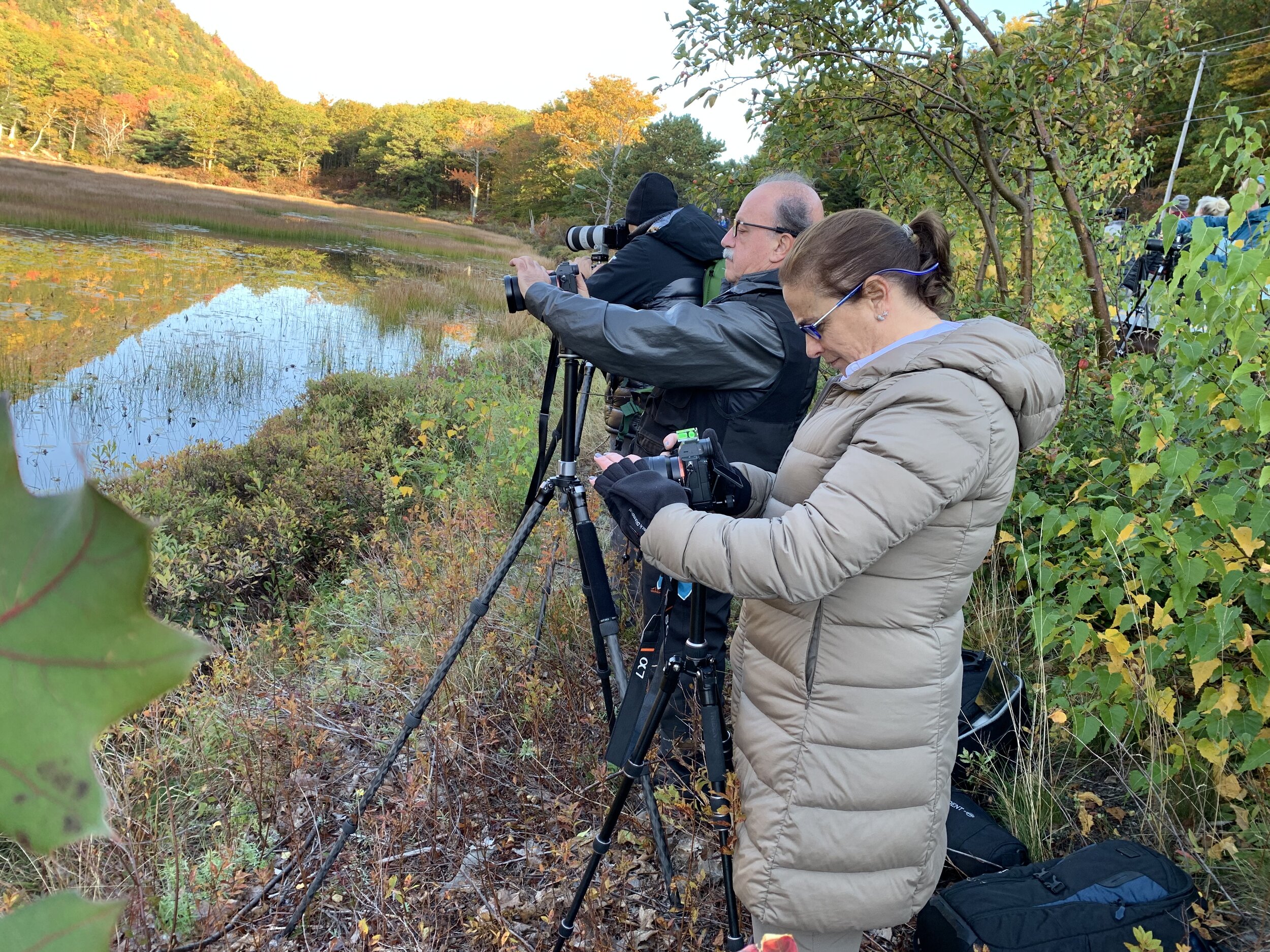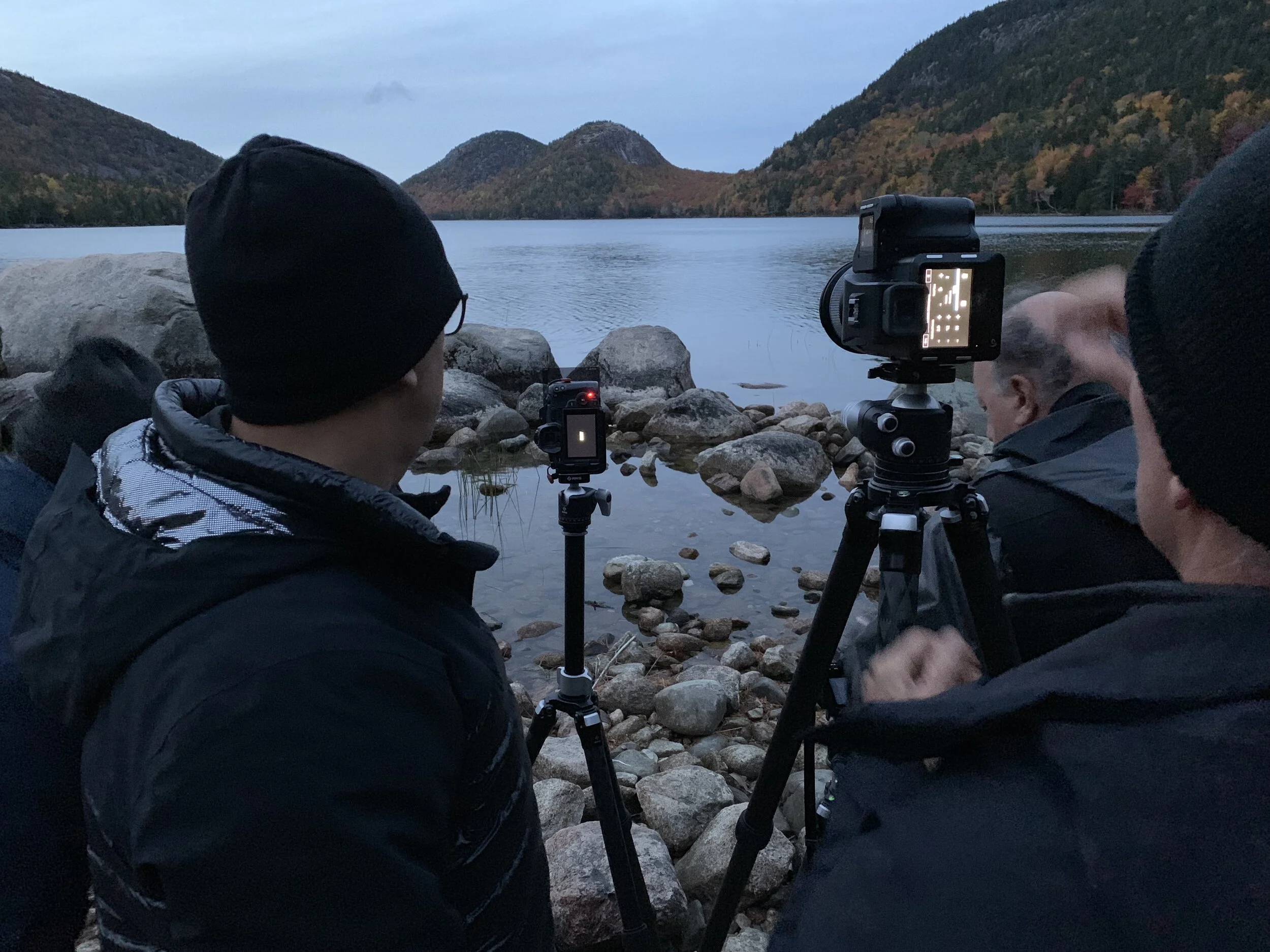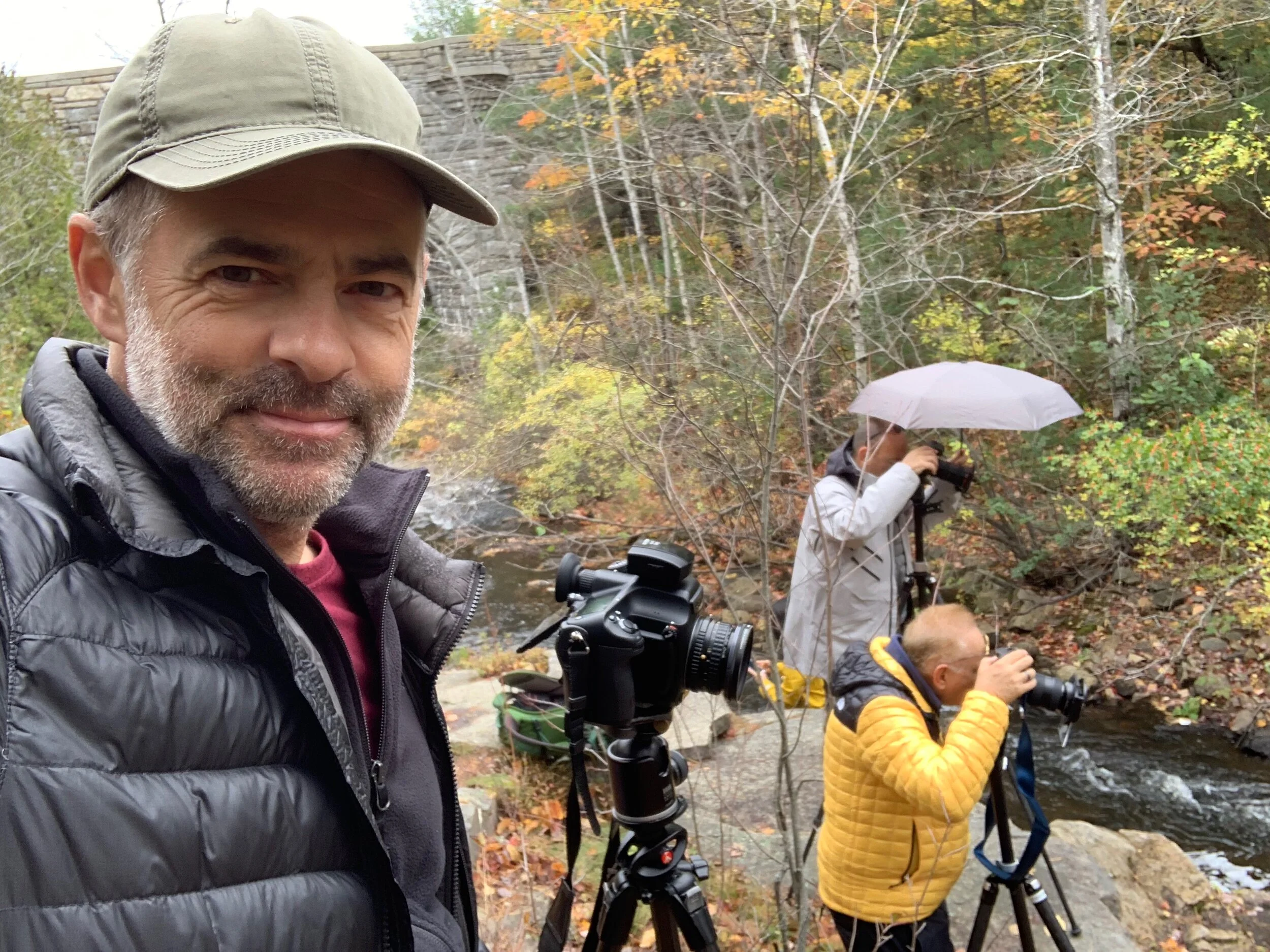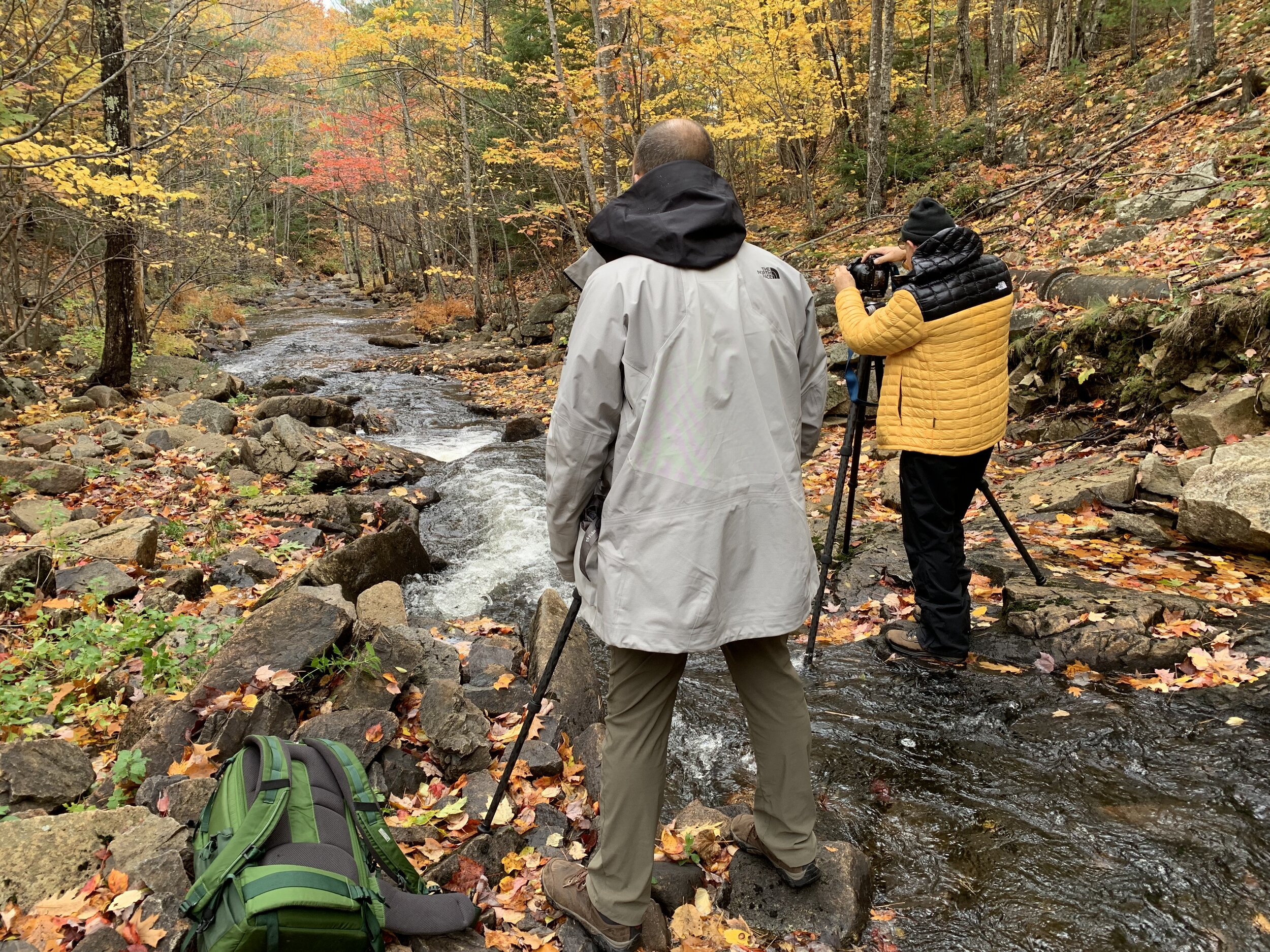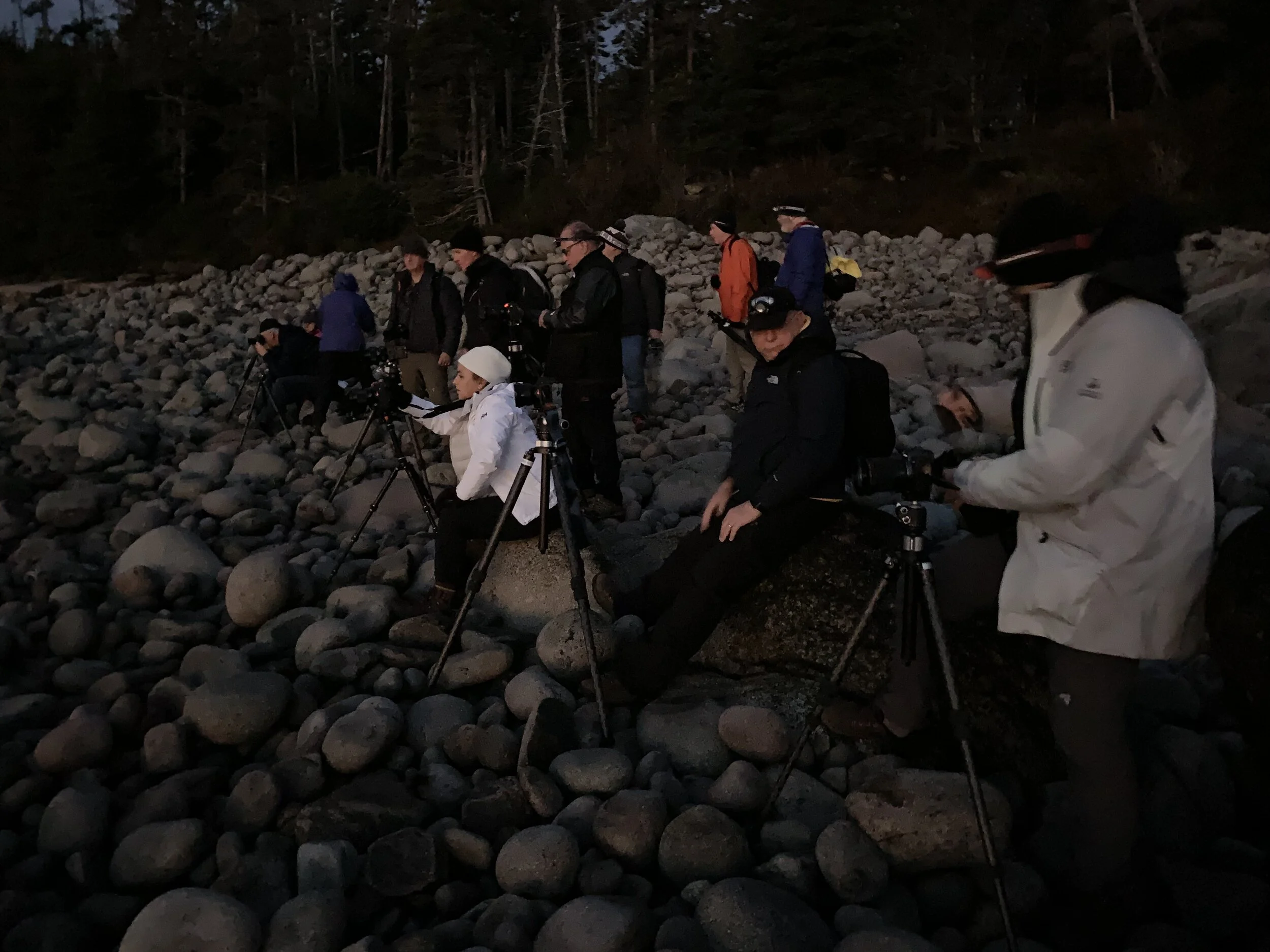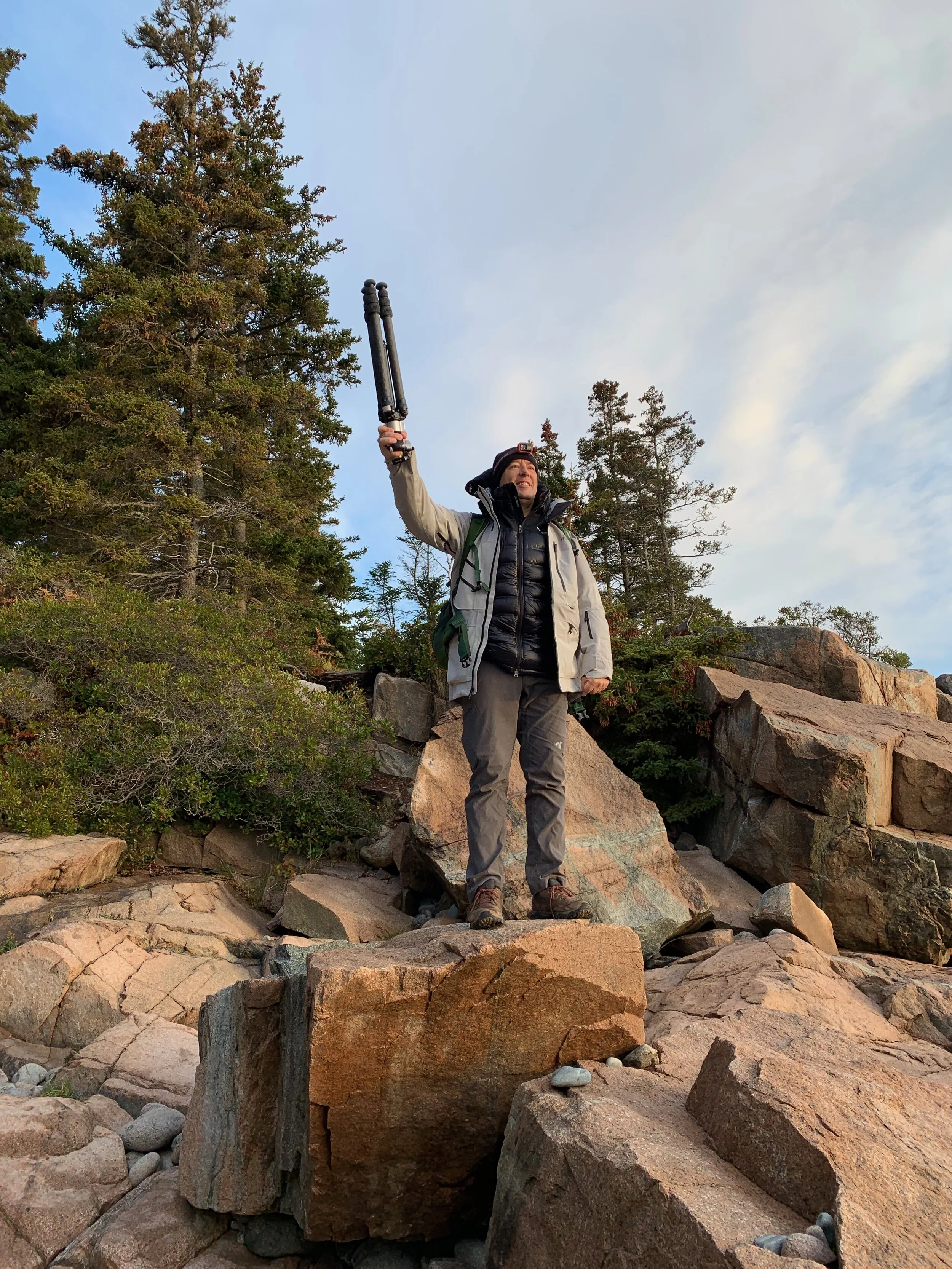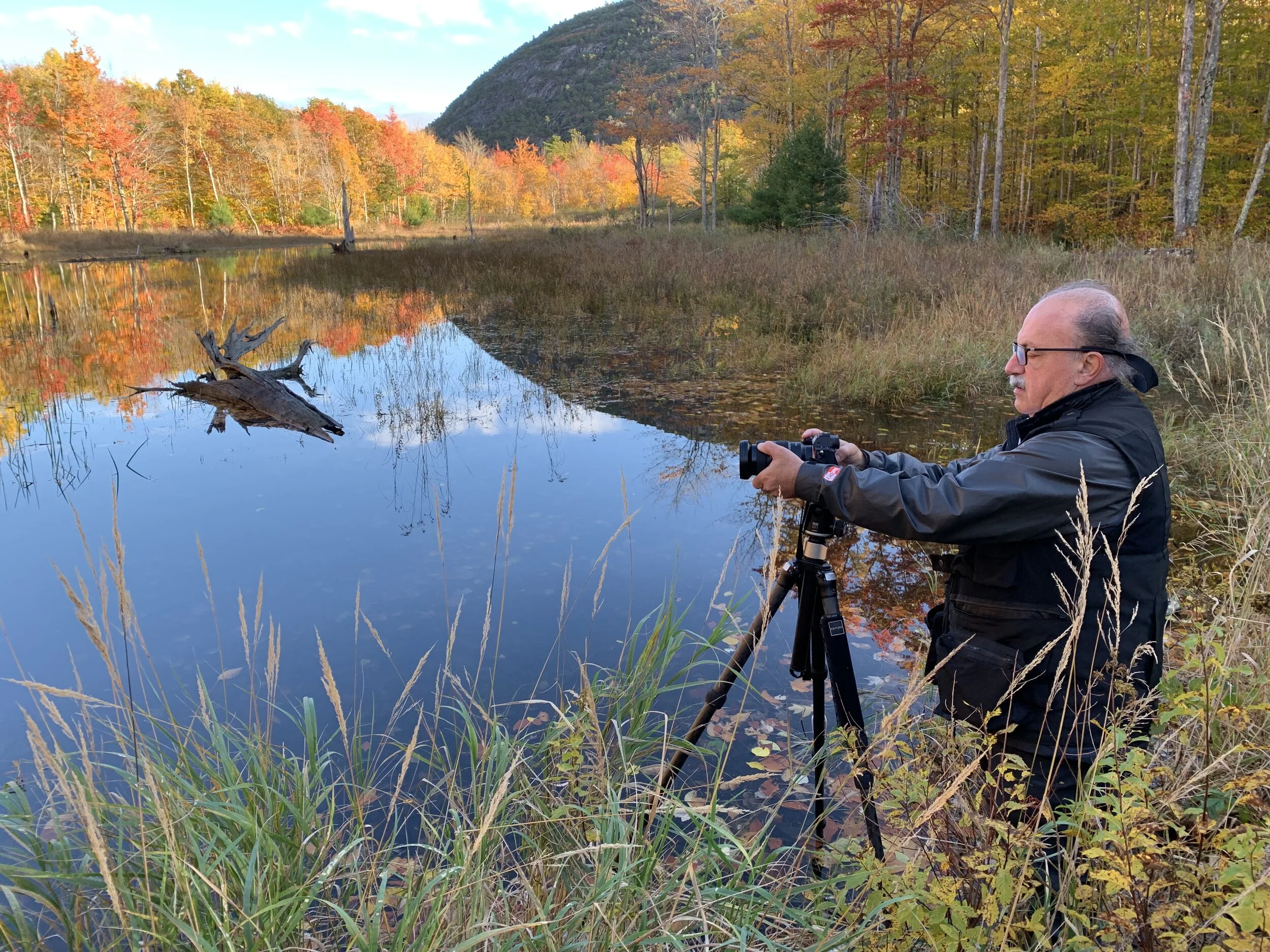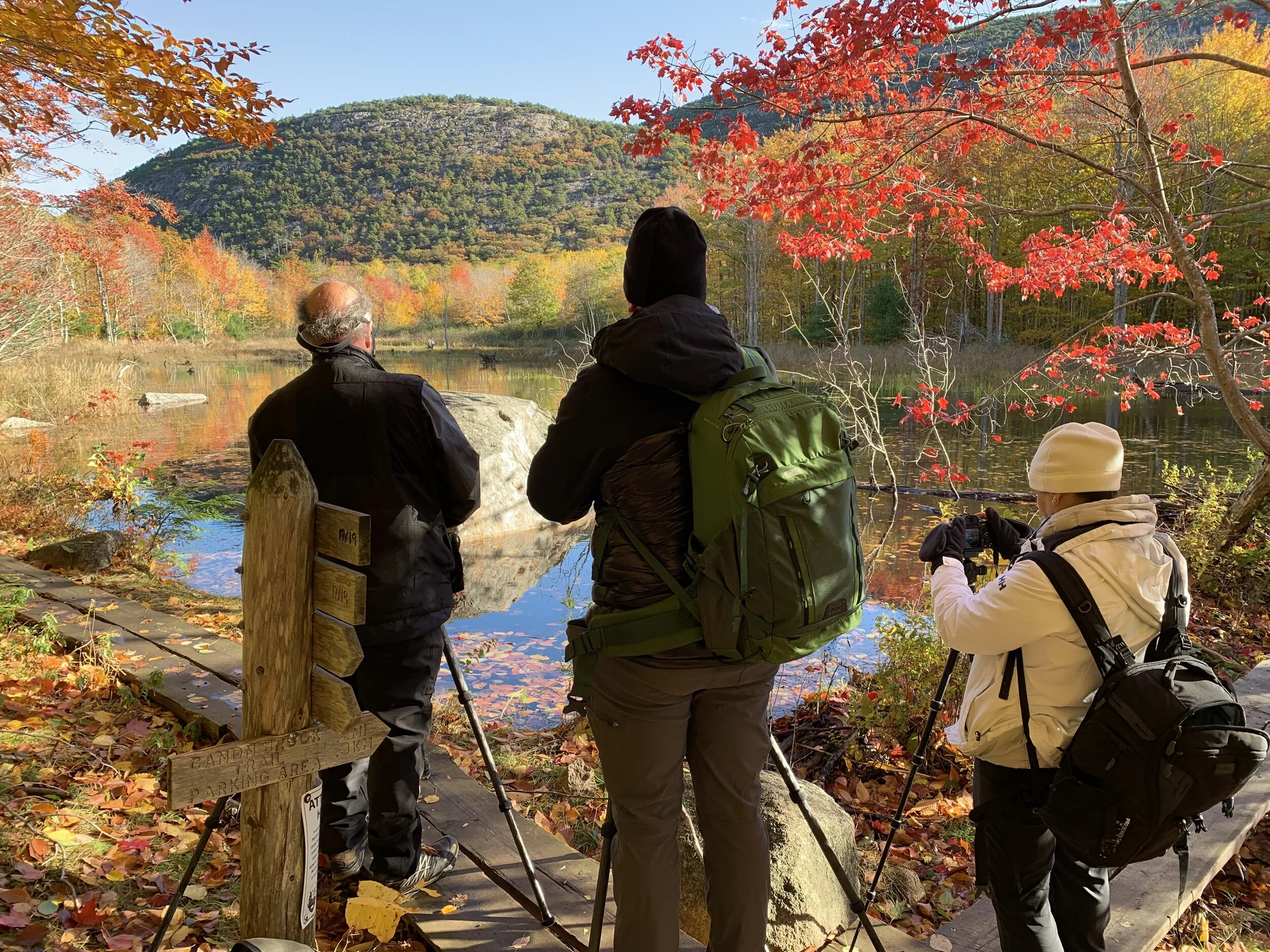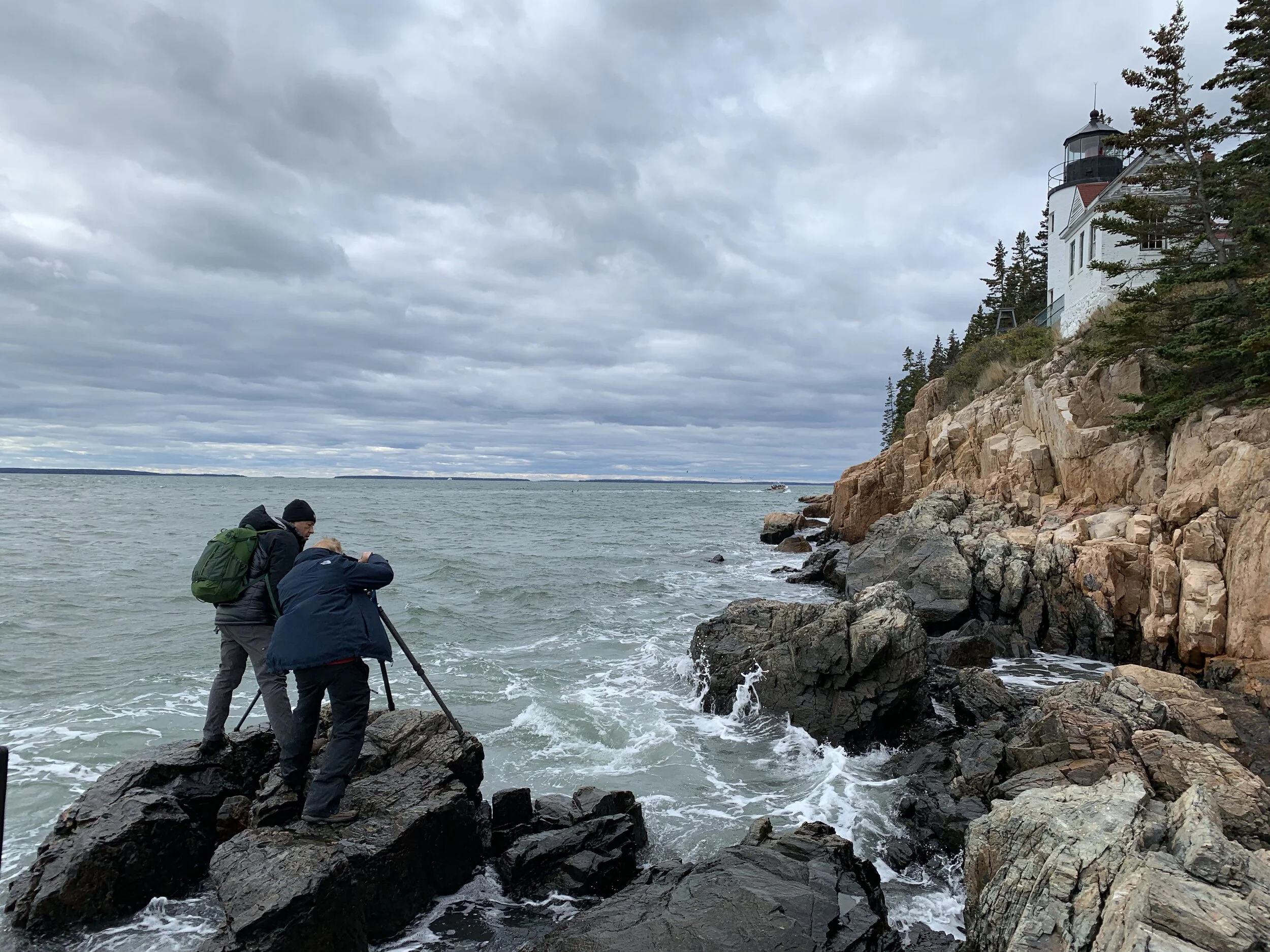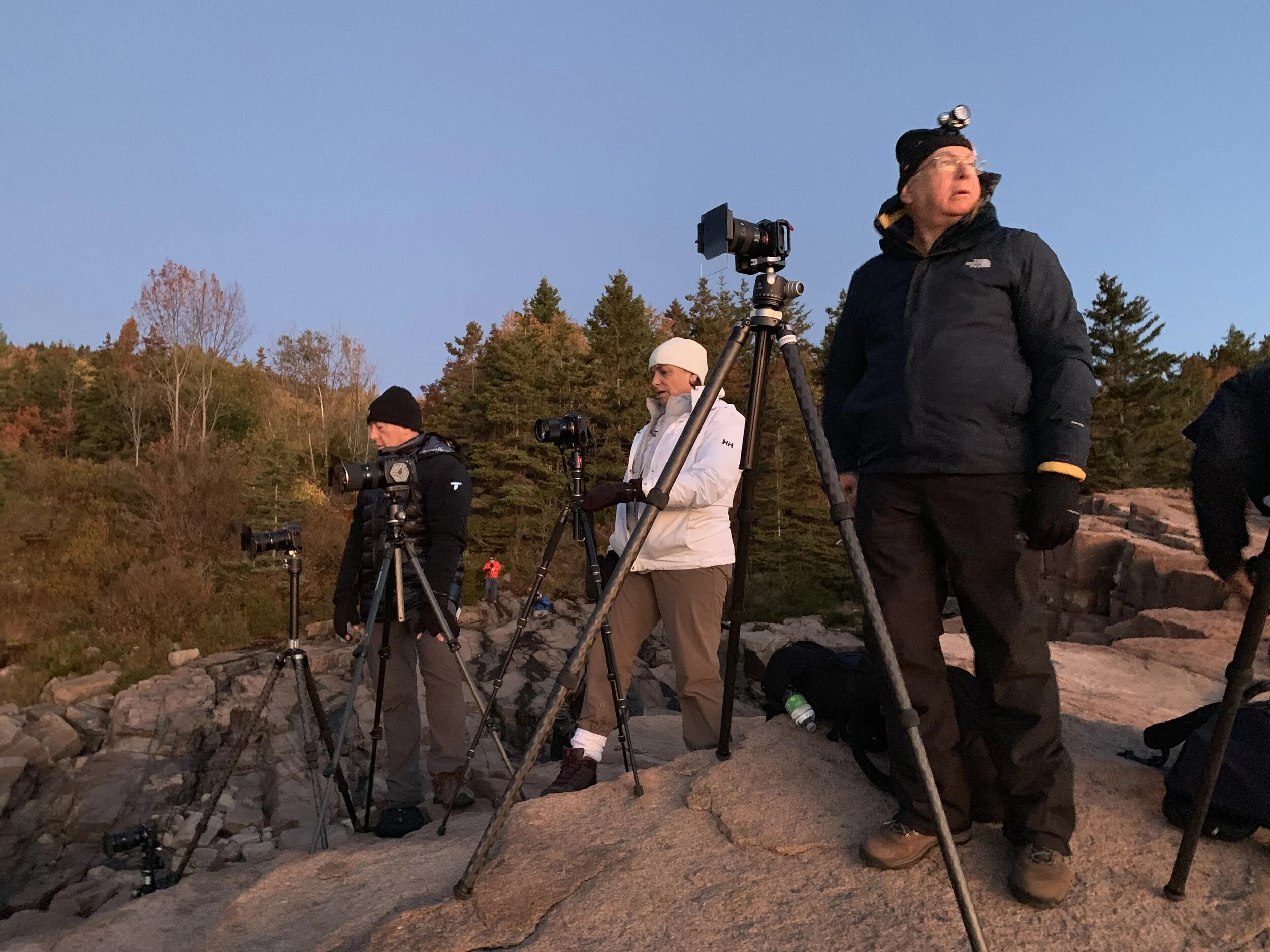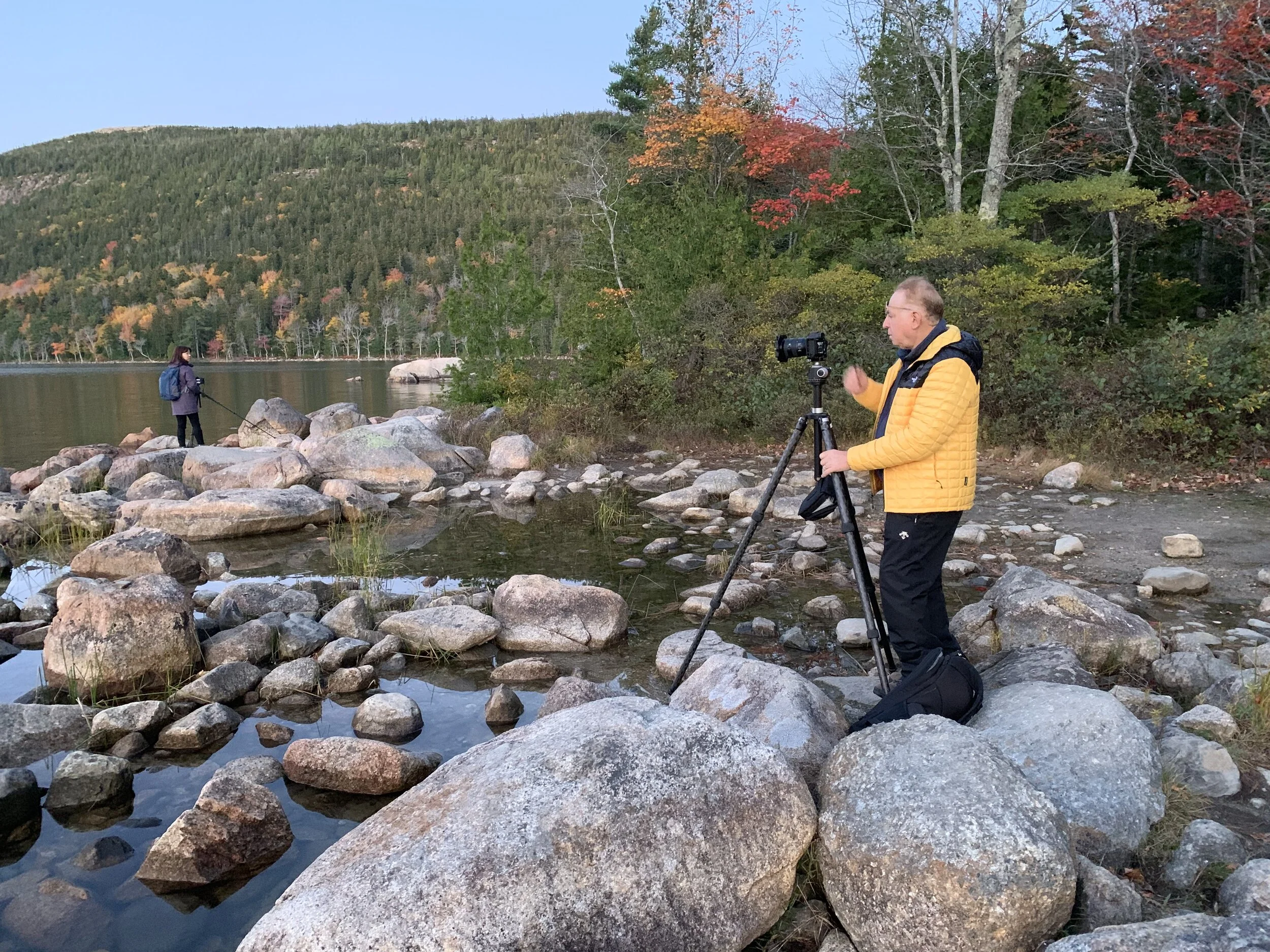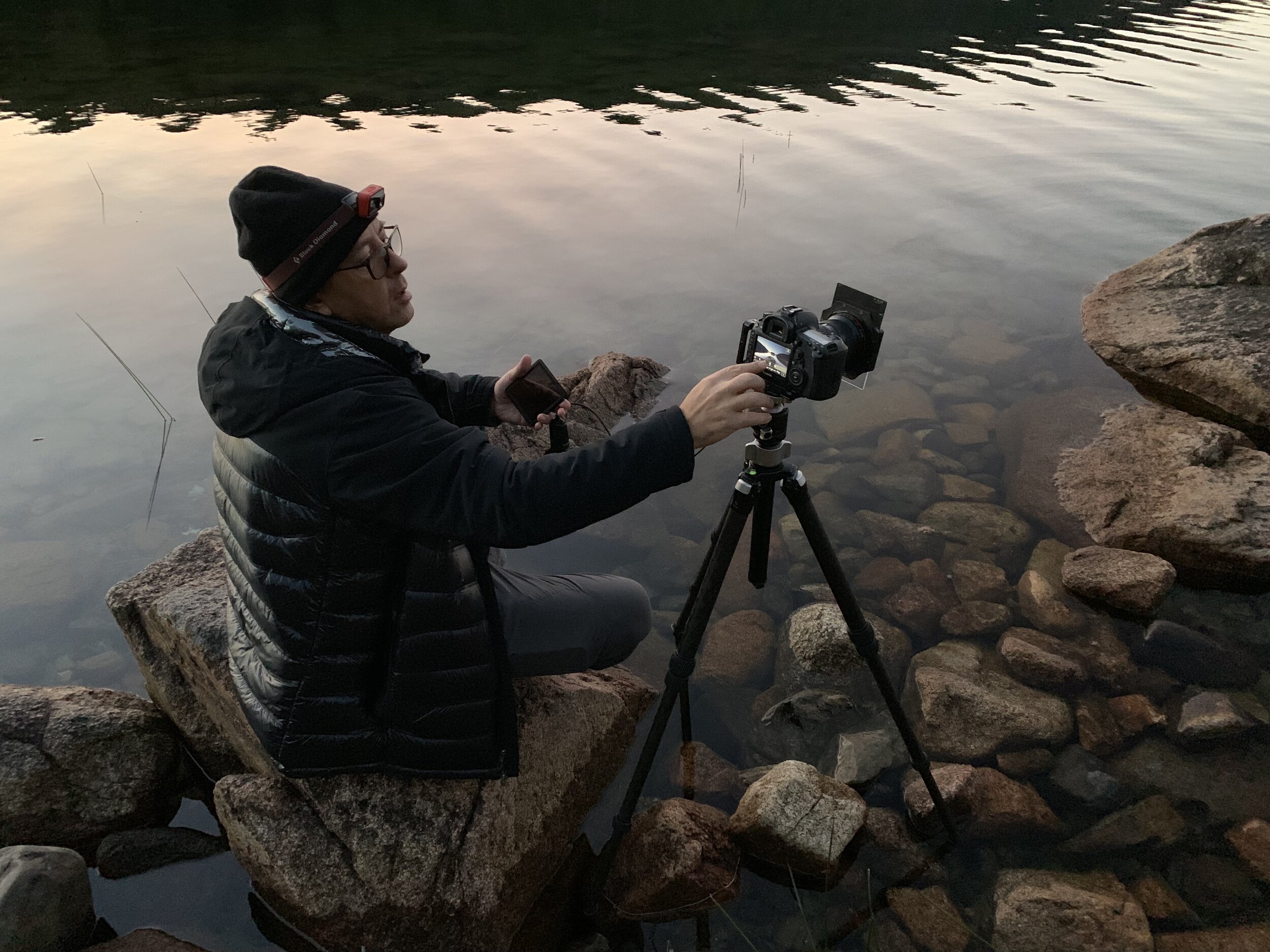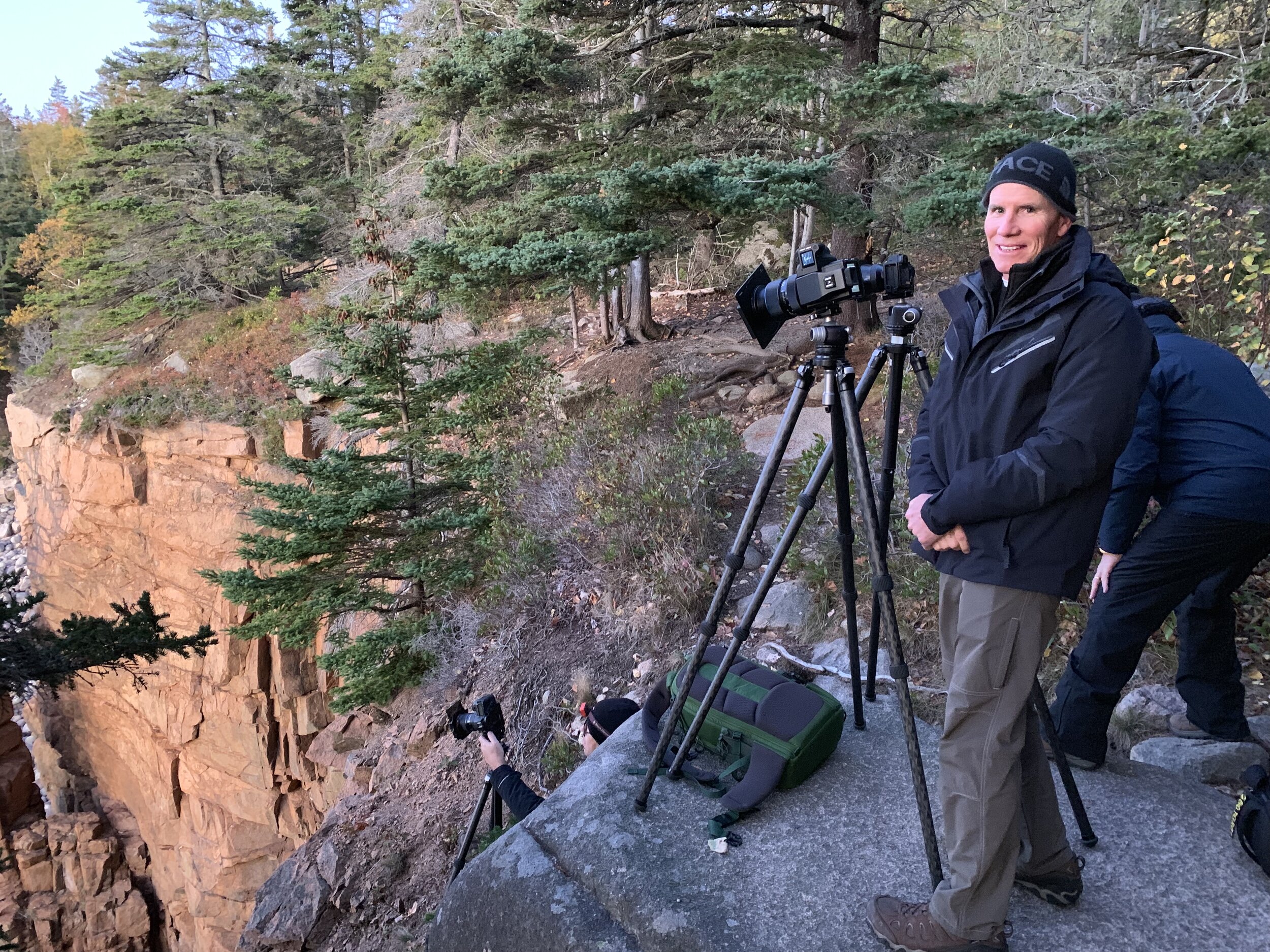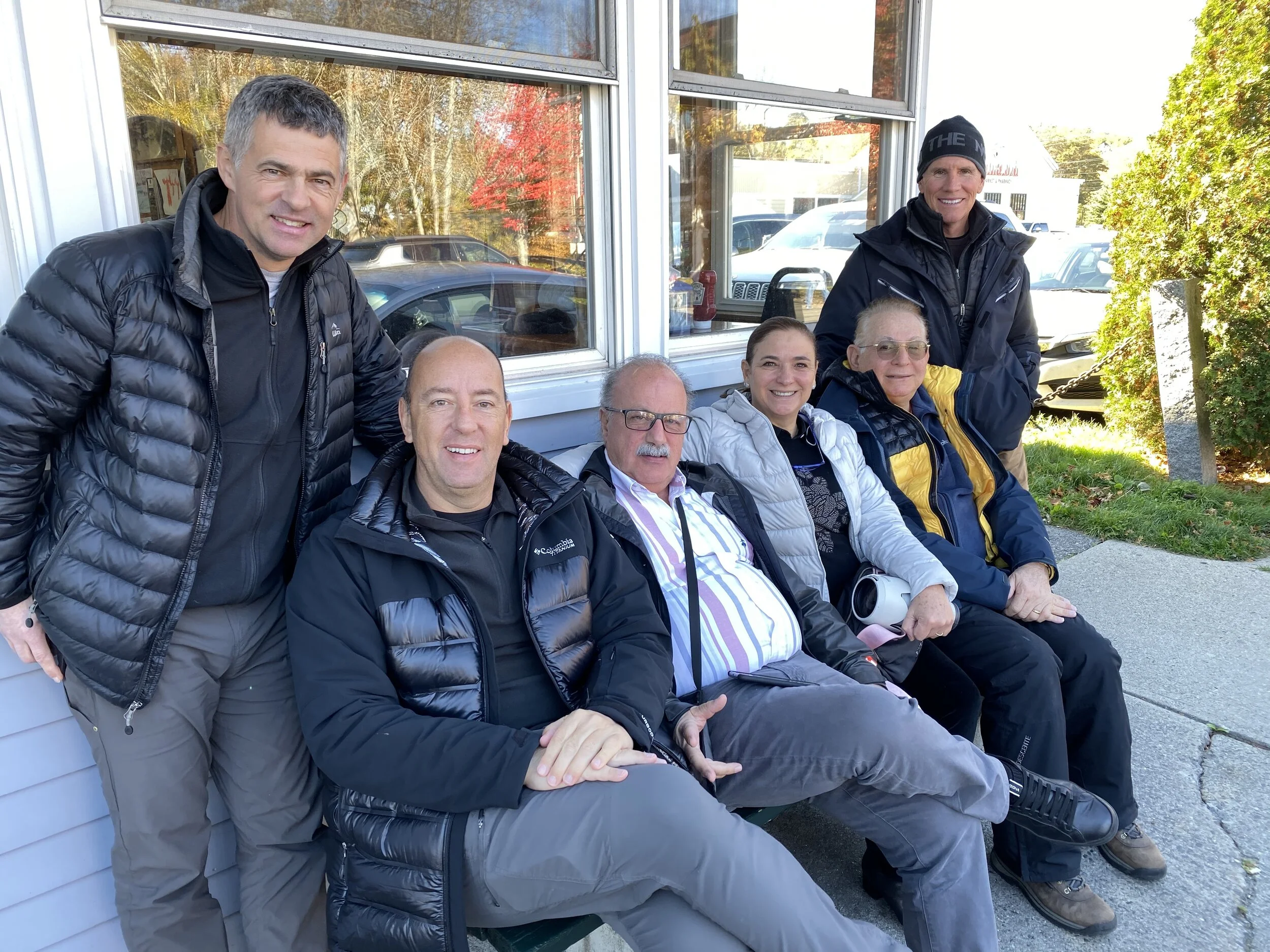Images of Acadia Workshops 2019
Acadia Workshop I: Mike (Illinois), David (Massachusetts), Mark (Louisiana), Me. Second photo: Eric (Illinois), third from left.
Acadia Workshop II: Me, Tomas (Ecuador), Sofia (Mexico City), Flavio (Argentina/Ecuador), Dave (Florida) and Markos (Mexico City).
Last week, I wrapped up my Images of Acadia photography workshops. The two, back-to-back five day tours were an unqualified success. Although our numbers were small, it only helped build some great camaraderie and develop friendships amongst us all.
Each morning, we’d meet at the hotel lobby between 5:30 and 5:45am, then head out for a full day of photography. Typically, we visited the coast for the sunrise, then headed inland for another shoot before returning to the hotel for some breakfast, or grabbing something more substantial at a restaurant in town.
Every day varied, but each location I chose was tailored to the weather conditions so nothing could be planned too far in advance. I know some workshops publish a calendar of places they’ll visit each day, but landscape photography is all about light and weather conditions, so we kept a close eye on the skies and the forecast so we’d be in the best place for the weather conditions. I kept a list of possible locations with me, and picked each one based on the current conditions– cloudy, blue skies, windy, etc.
We couldn’t have chosen a better time for the Fall colors in Acadia. I think they peaked about halfway through the second workshop, which meant the timing was perfect for both workshops. When I left a couple days later, there were more bare trees than colorful ones.
We had an eclectic mix of photographers. All had been taking photos for years, but some were just moving away from a ‘snapshot’ phase to learning how to shoot manually and create art with their cameras for the first time. Others were seasoned workshop attenders, having travelled all over the world to photograph the landscapes of Africa, the Far East and Antarctica. We used a variety of cameras, from newer Sony mirrorless cameras, to Canons, Nikons, Pentaxs and even the new 150-megapixel Phase One camera. And the photographers came from near and far– Massachusetts, Louisiana, Illinois, Florida, Mexico, Argentina and Ecuador, making these truly international workshops.
We only had two slight mishaps over the two week period, and they both involved one of our favorite places– Duck Brook. One photographer slipped and broke a graduated filter on the rocks along the brook. Then another knocked his filter holder off the front of his lens into the water, losing a polarizer, graduated neutral density filter and neutral density filter– over $300 of gear– in the fast-flowing stream (a Nor’Easter had just hit the area that morning, dumping heavy rains in the area). As much as we tried, we couldn’t find them and had to give up the search after a few minutes. Two days later, we were back in the area and, with water levels lower, I thought we’d try searching for the filters one more time. After only a couple minutes, Tomas reached his hand into the stream and pulled out the holder with all filters intact, with only some slight scratches on one of them. It was a great triumph, and we were glad B&H had been closed a couple days earlier, or he would’ve spent a lot of money overnighting all new filters to the hotel.
Tomas with the wet, but intact, filters and holder.
One of the things I teach my photographers is to deal with whatever circumstances you face in the field. We can’t control the weather, but we can work with what we’re given. One good example of this is when Flavio mentioned he wanted to photograph the Bass Harbor lighthouse. It wasn’t on my list of places to photograph– as much as it’s so iconic to Acadia, it’s also one of the busiest and most crowded spots in the park. In the past, I’ve seen tempers flare as photographers and tripods jockey for position over the limited space on the rocks in front of the lighthouse, all hoping to capture that iconic sunset image of the lighthouse. It’s definitely not a place where you ‘quietly commune with nature’; it’s more like, you mark your territory and hope no one walks in front of you at the last minute to block your view. On the last full day of the second workshop, we had blue skies but some mid-level clouds. Not the best light for artistic images, but on a whim, I decided we would visit the lighthouse at midday. My hunch was a good one, as there were very few people there at that time, and I encouraged my photographers to use the slowest shutter speeds possible (several used 10-stop neutral density filters to extend their exposure times and blur the passing clouds), resulting in some great, moody images.
Tomas and Flavio work the best angle for a dramatic image of Bass Harbor lighthouse.
Apart from the morning we had the Nor’Easter go through the area, both groups spent most of their waking hours in the park, shooting sunrises, sunsets, foliage, woods, mountains, ponds, stream, lakes and more. We walked several miles each day, even though most locations were close to the car. Hopefully everyone went home satisfied and wanting more after their five-day adventure in the great outdoors of coastal Maine.
If you’re interested in joining me next year, send me a message or sign up for my newsletter below, and I’ll make sure you’re notified when registration opens up.
